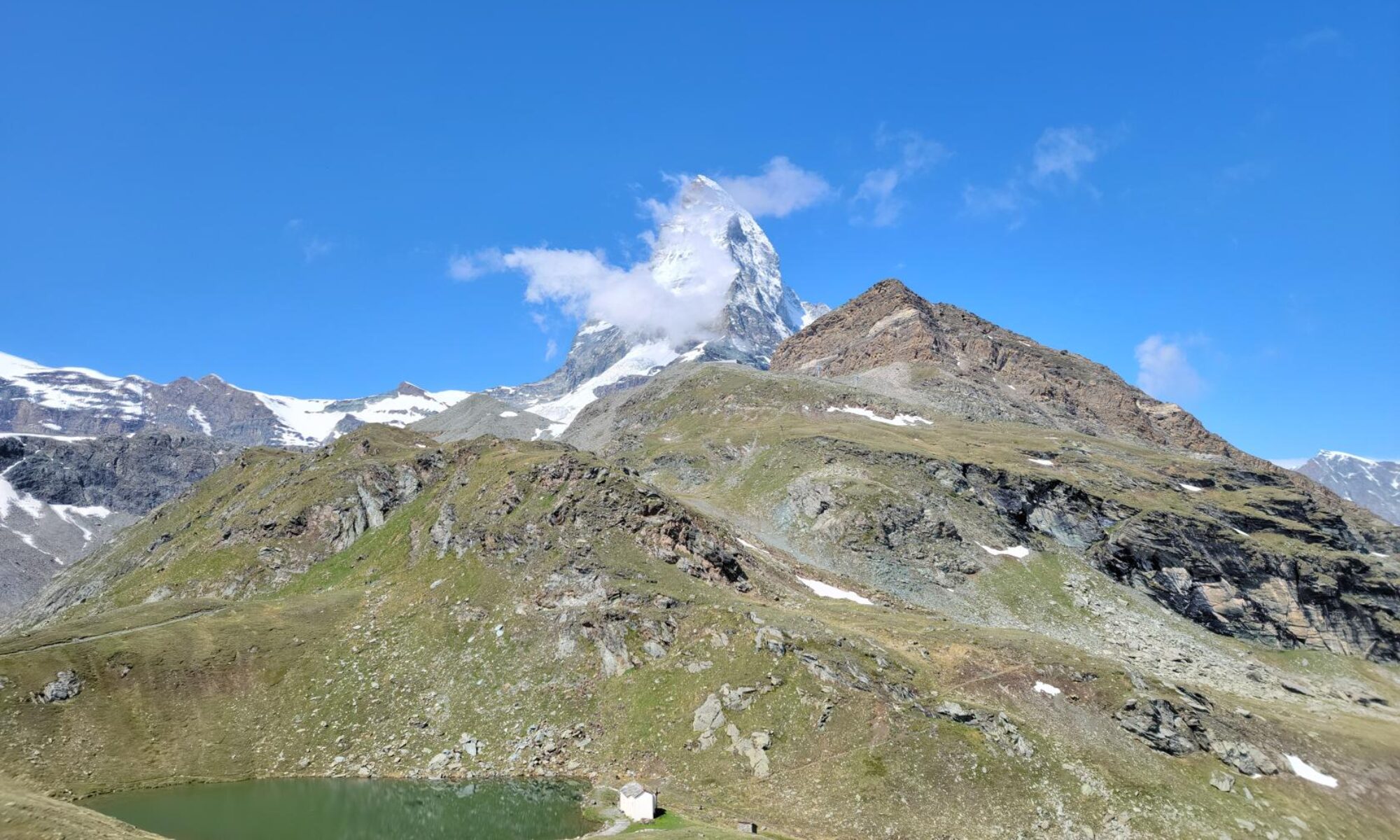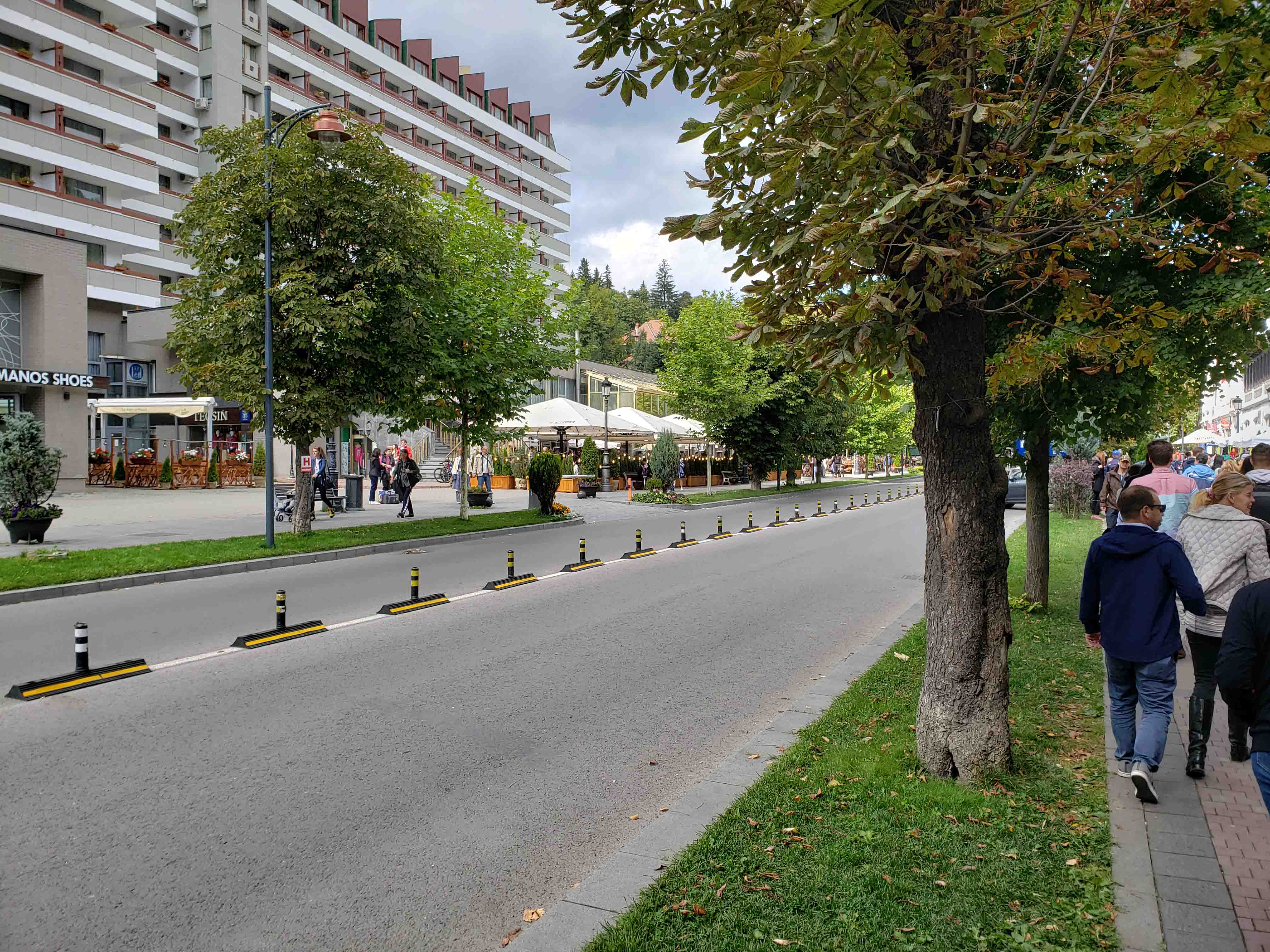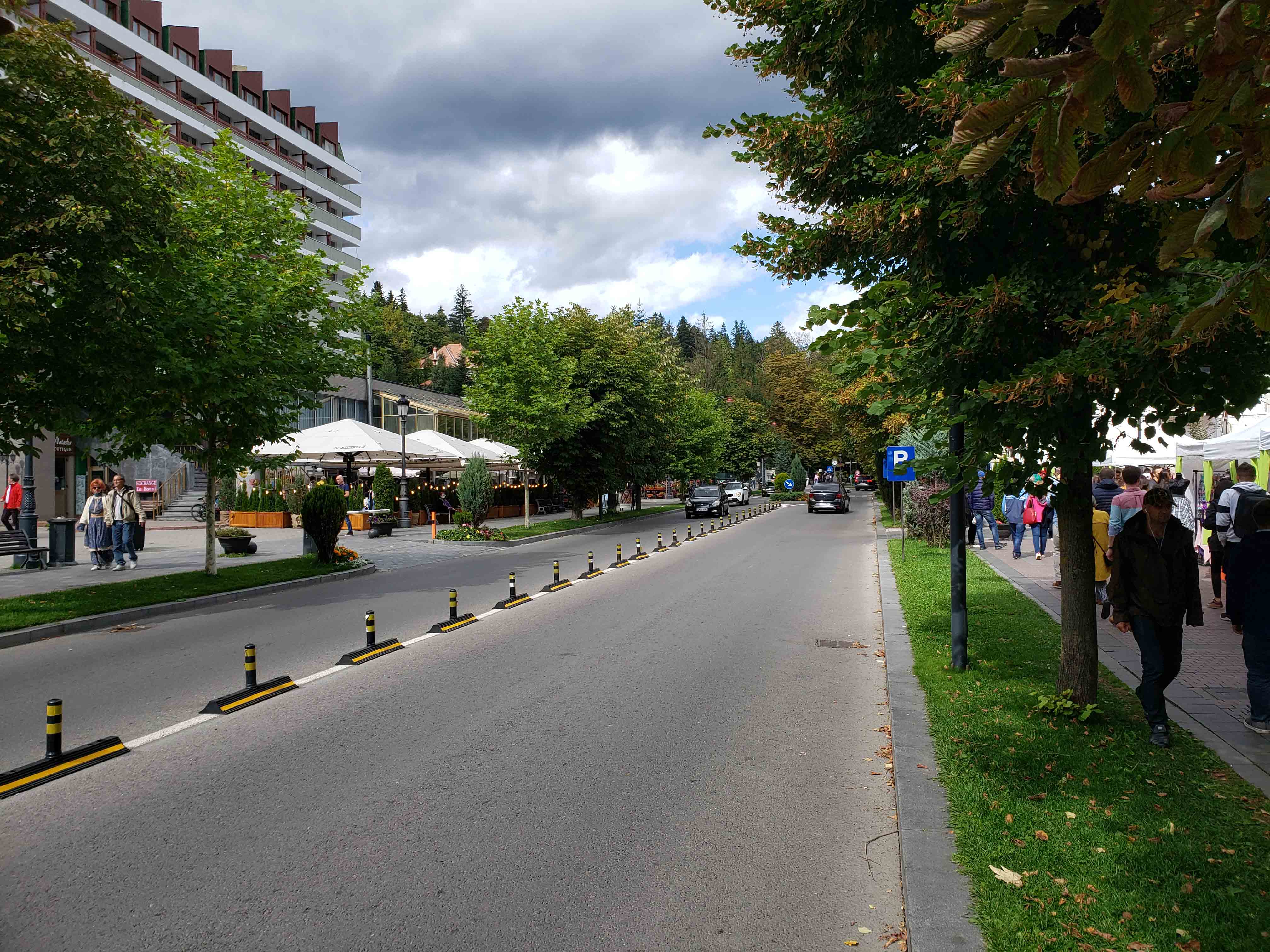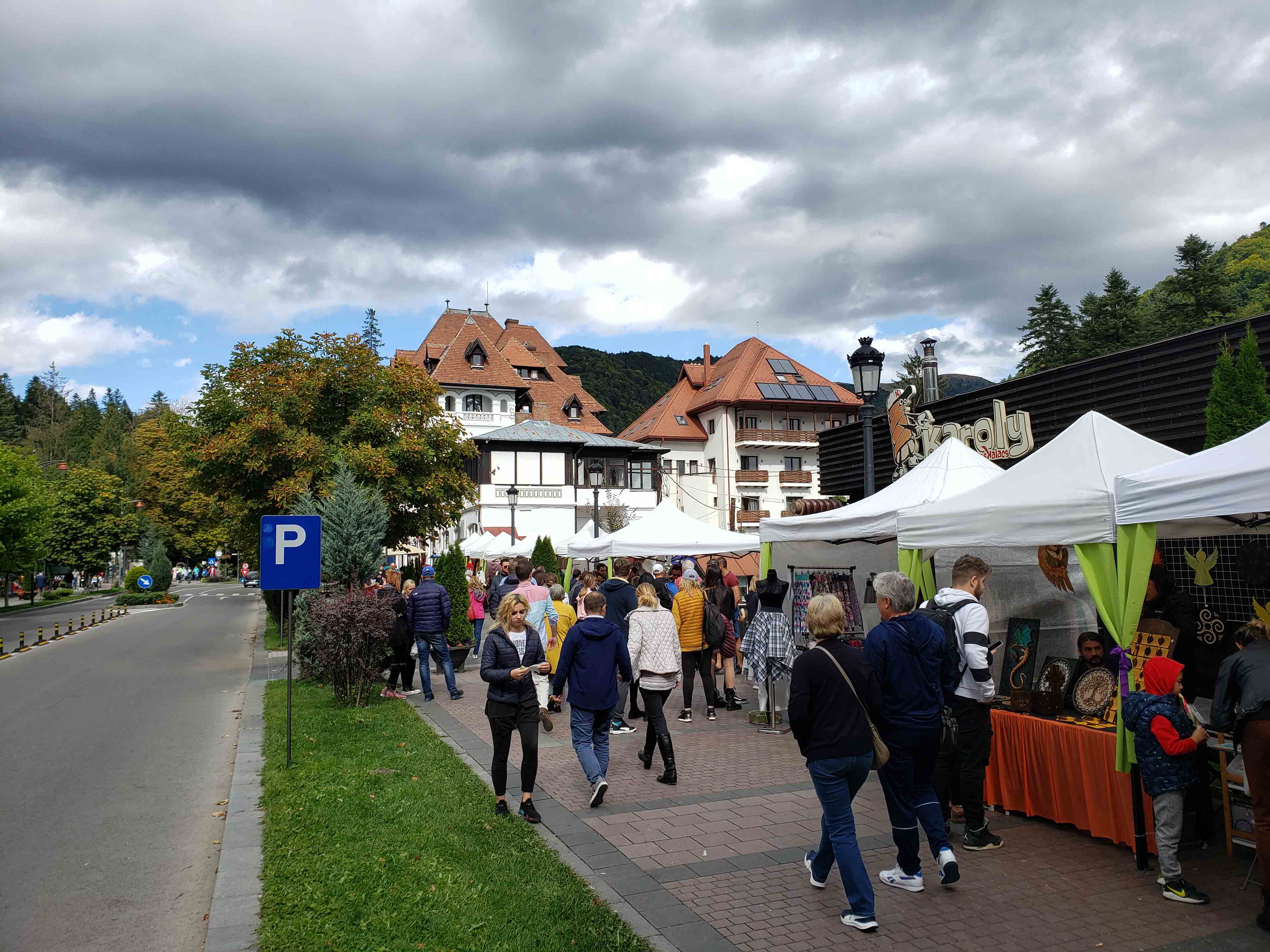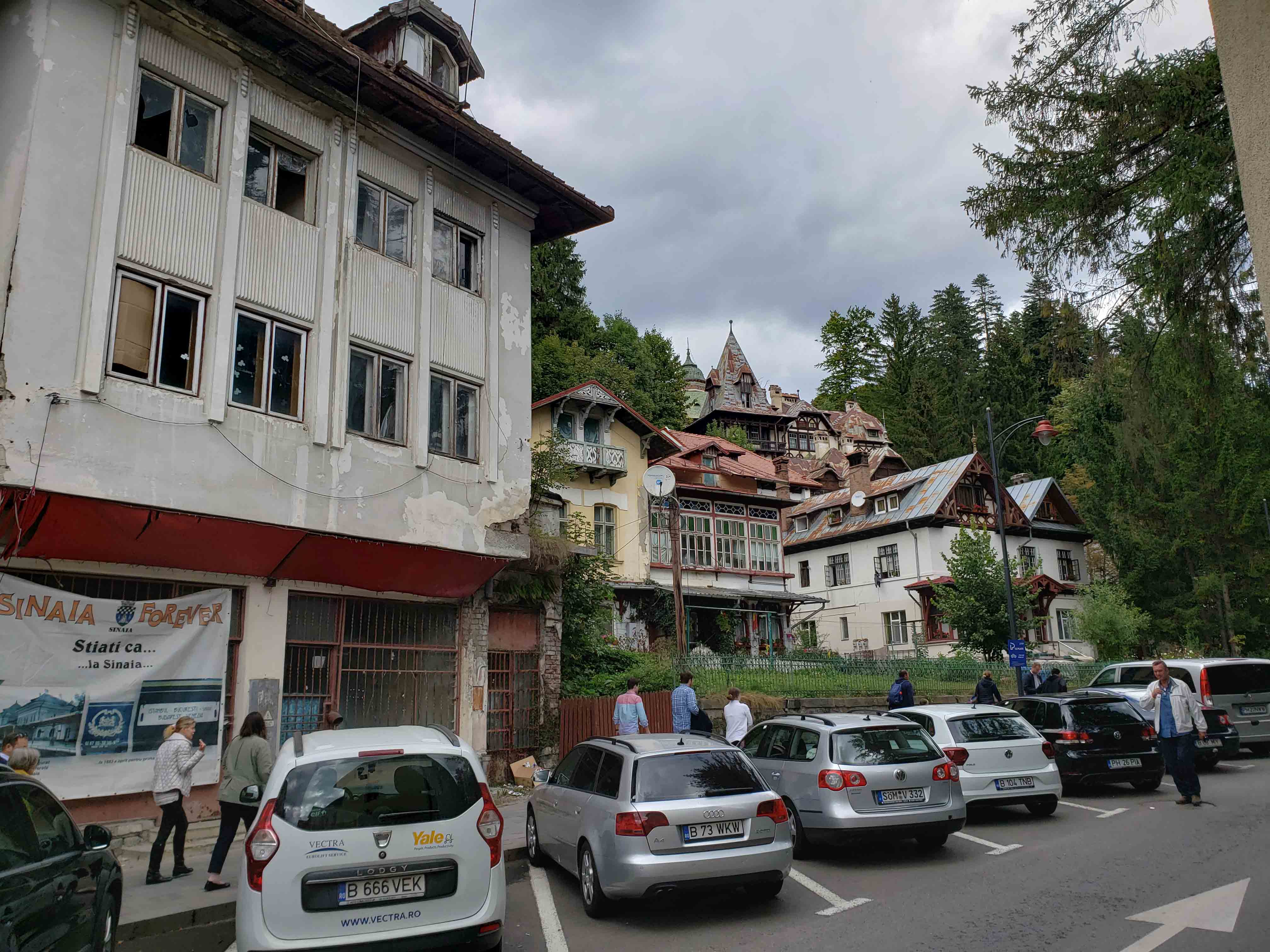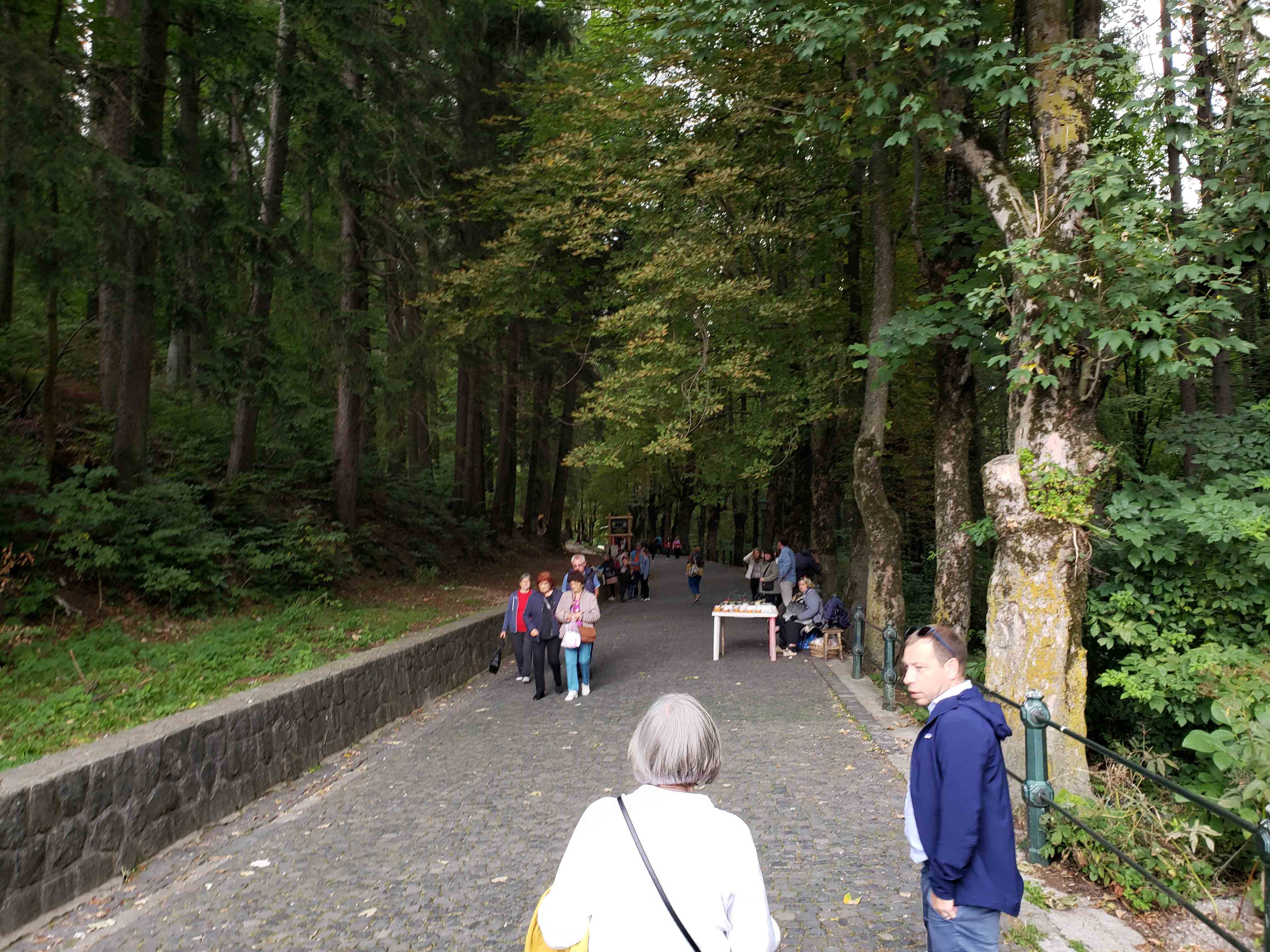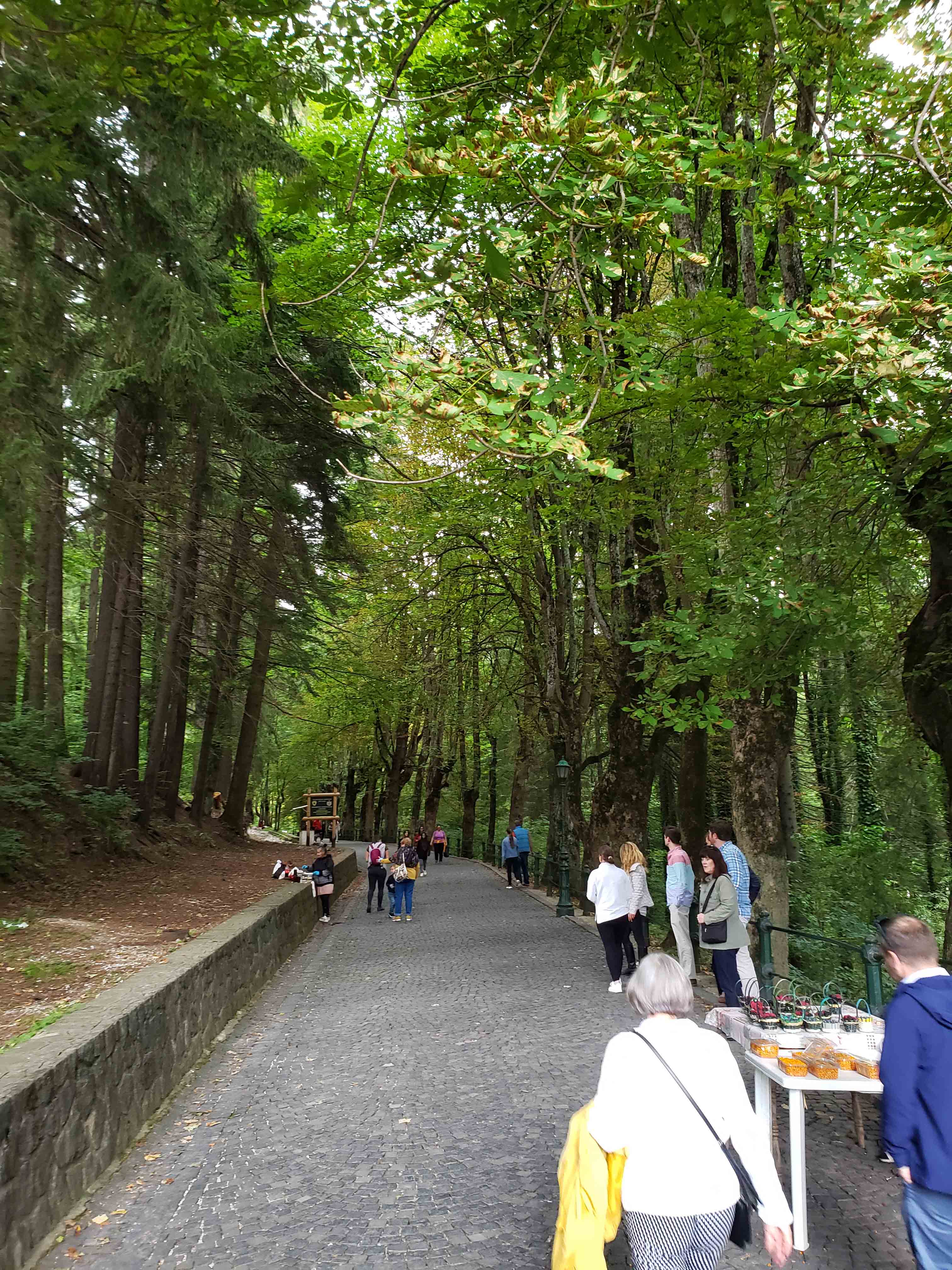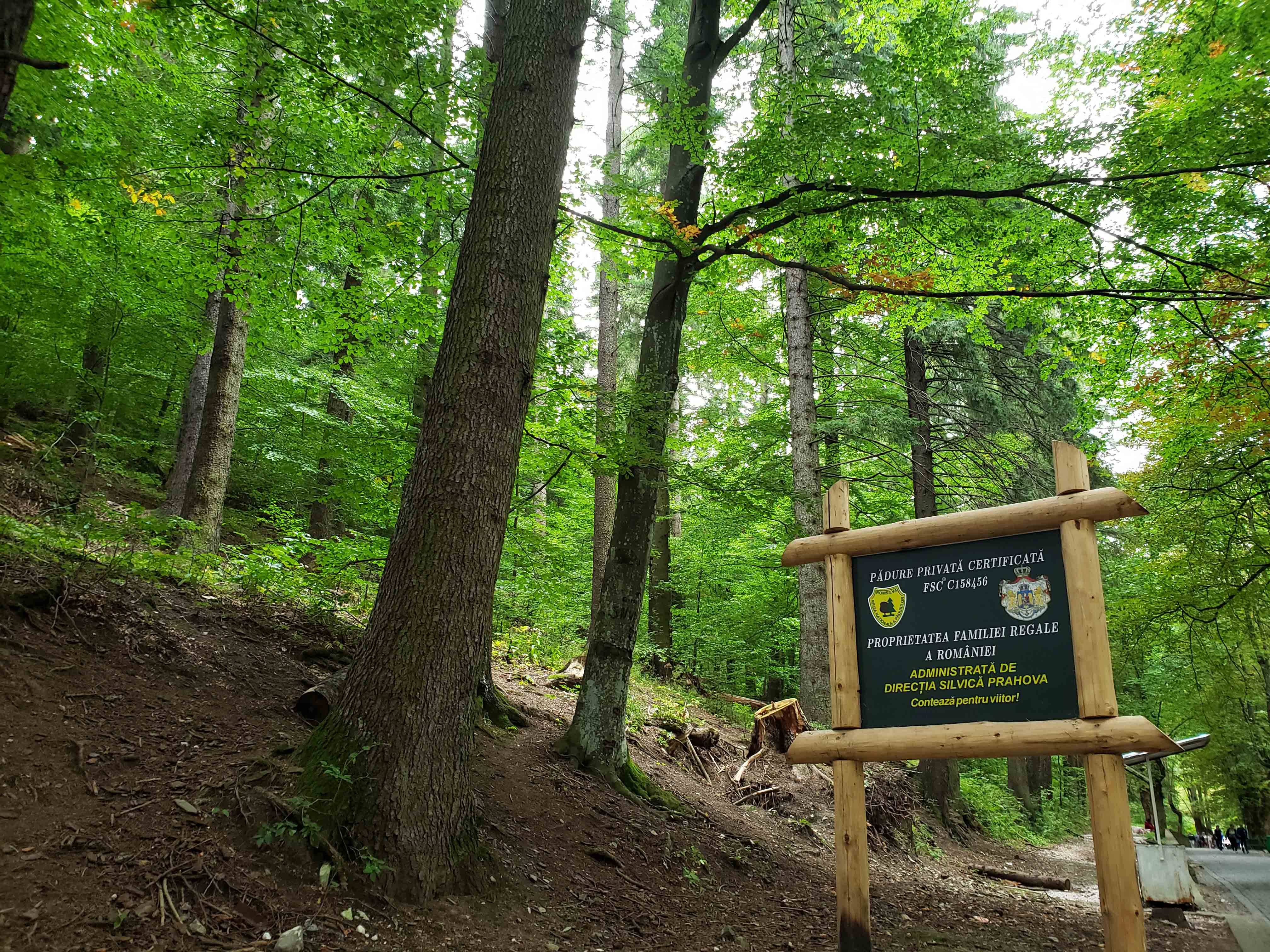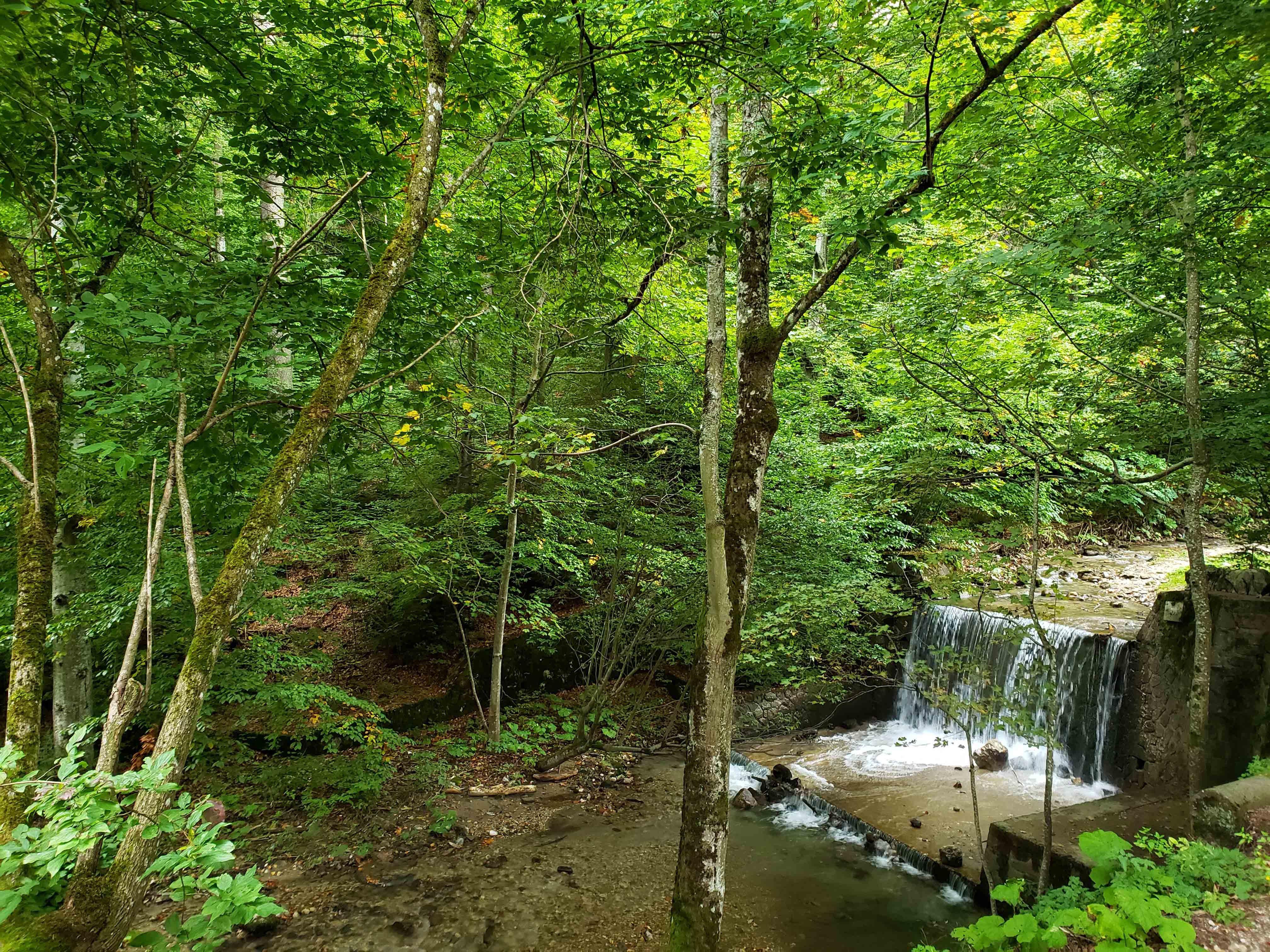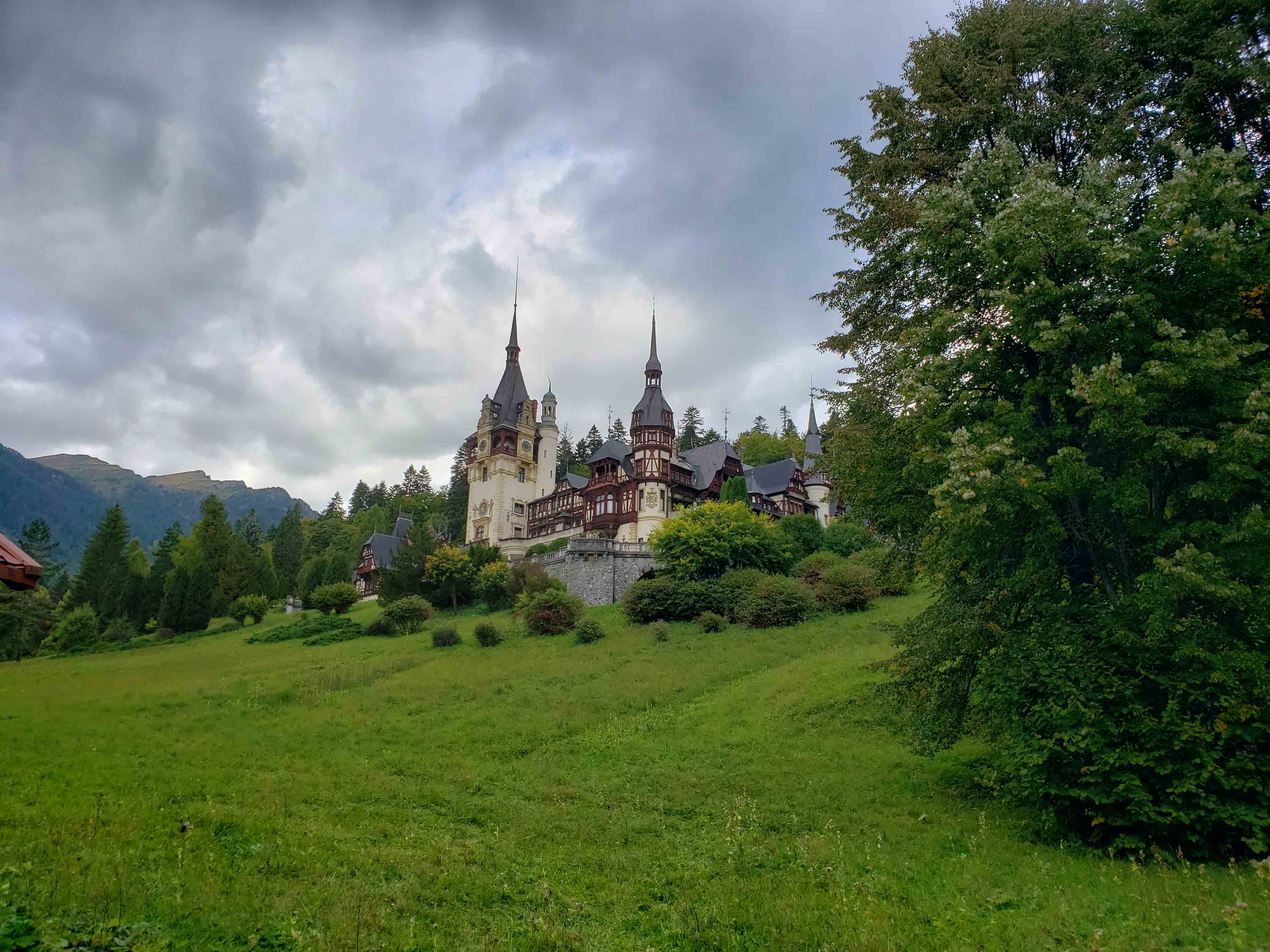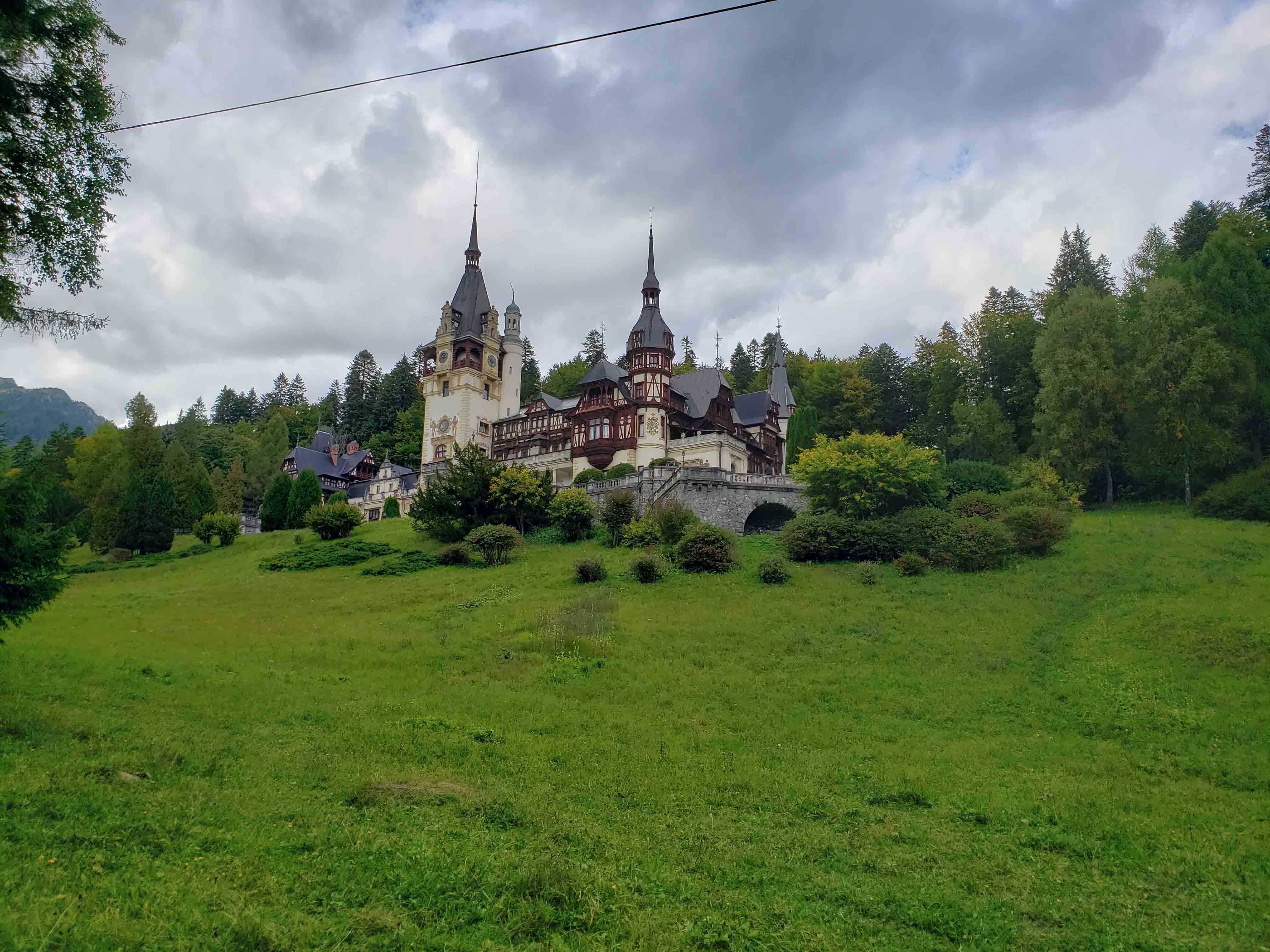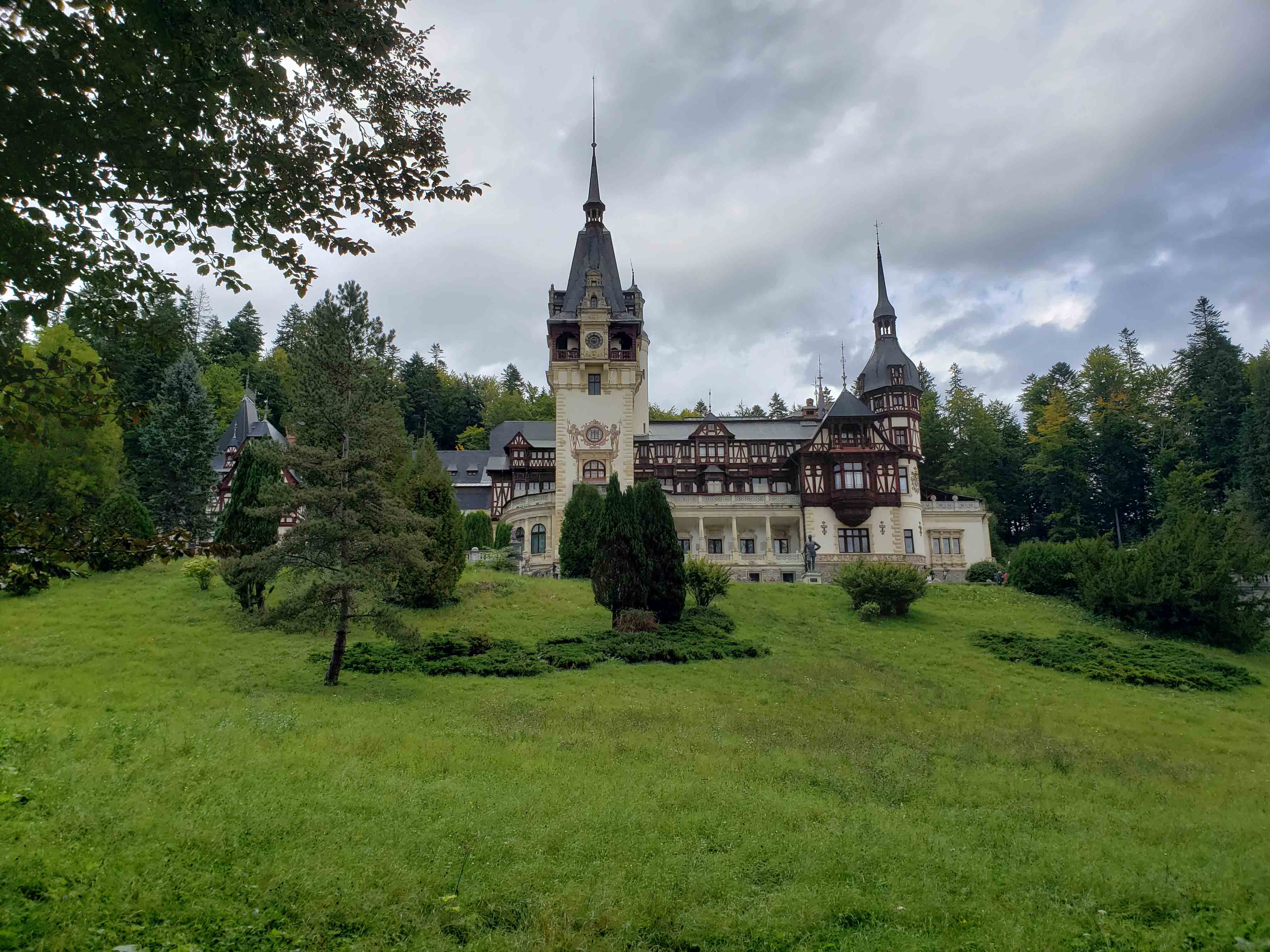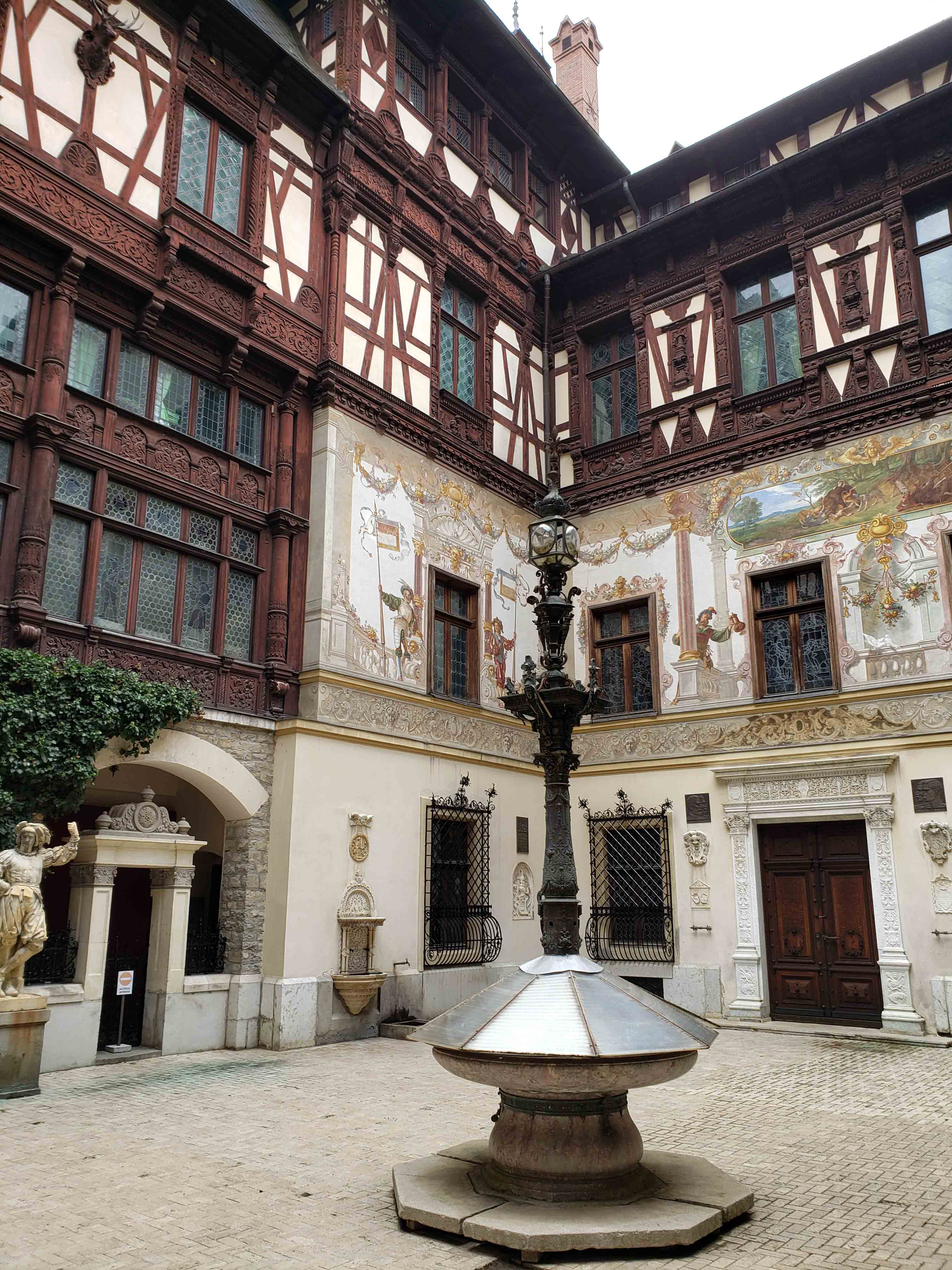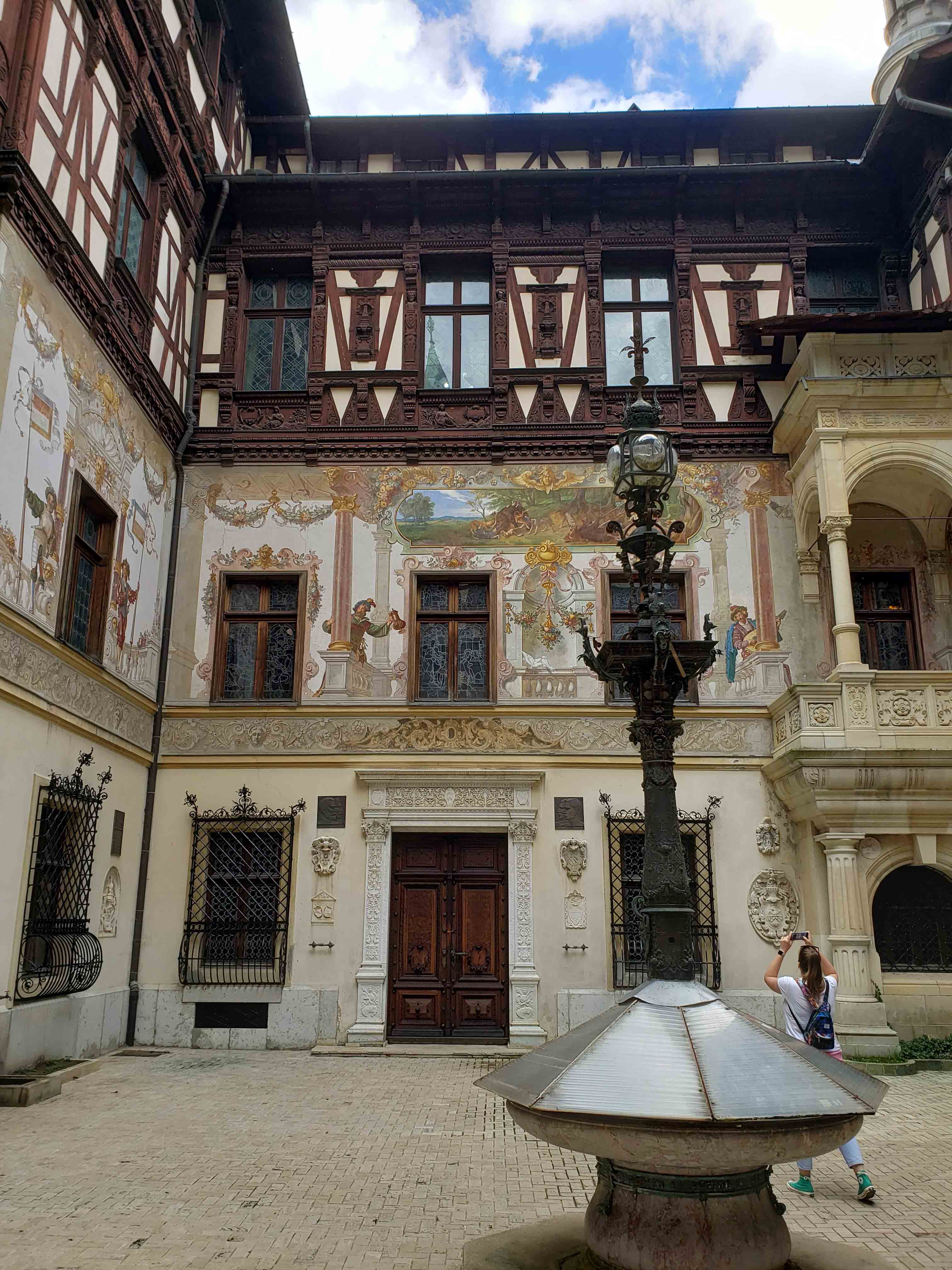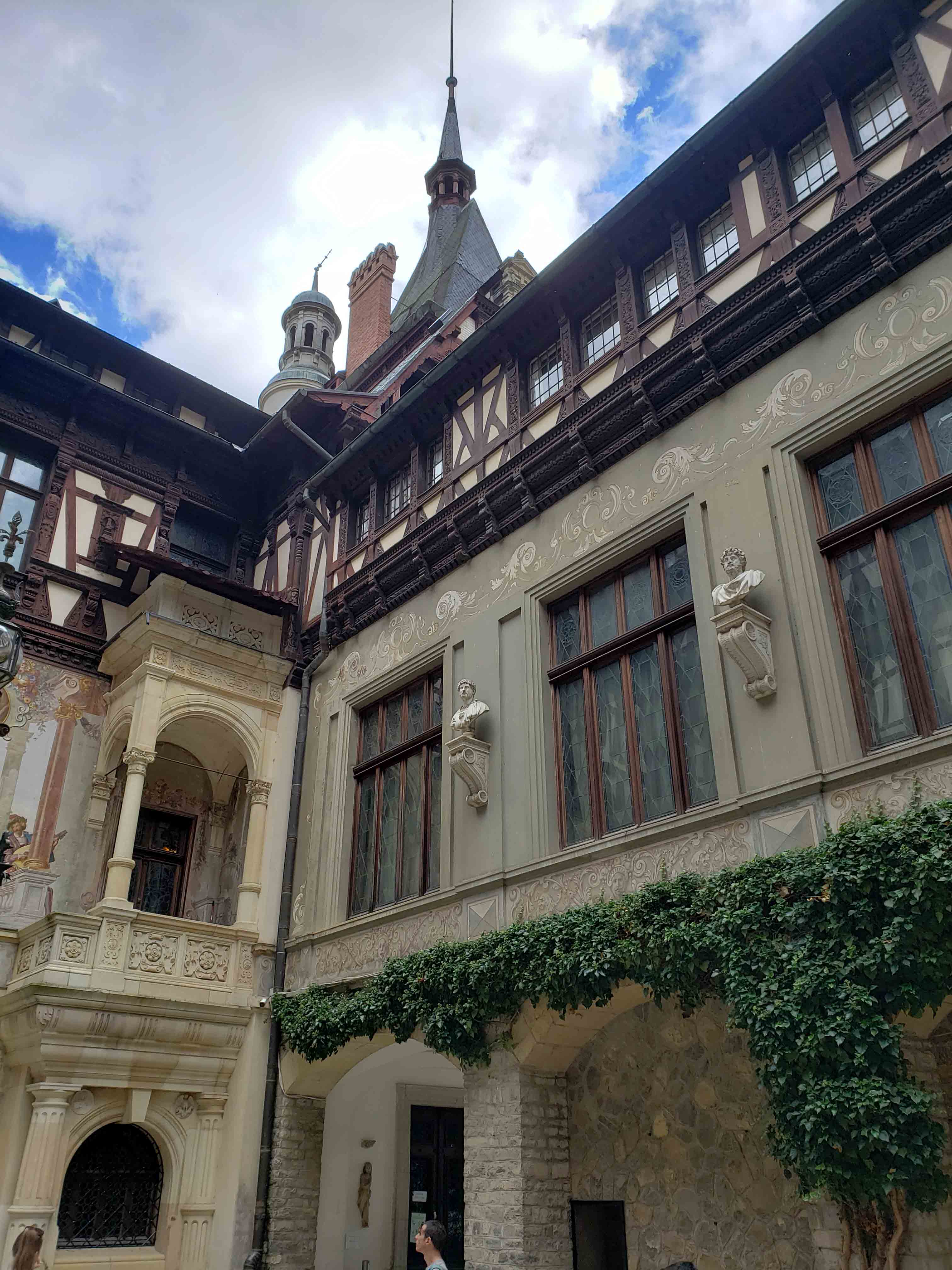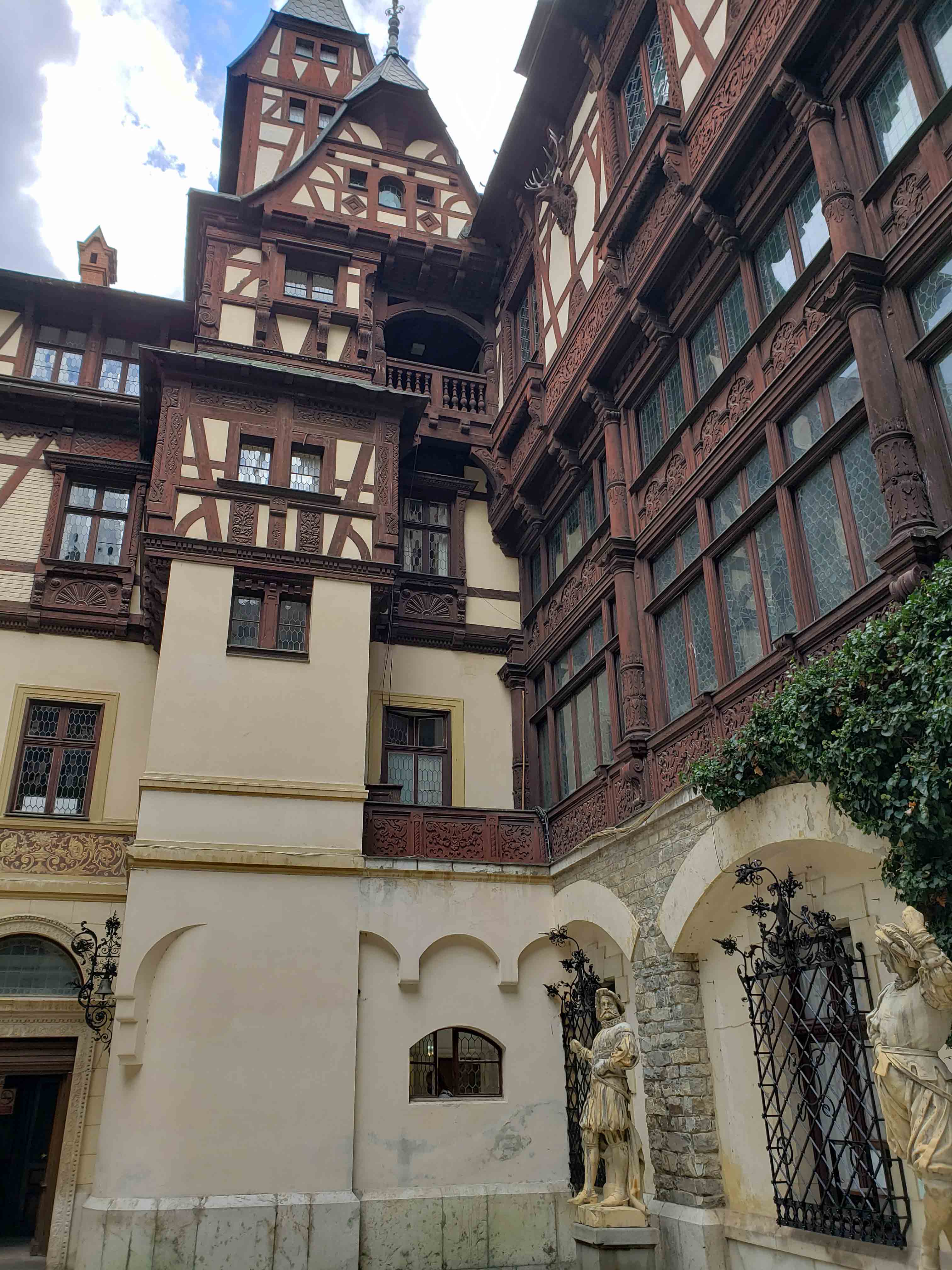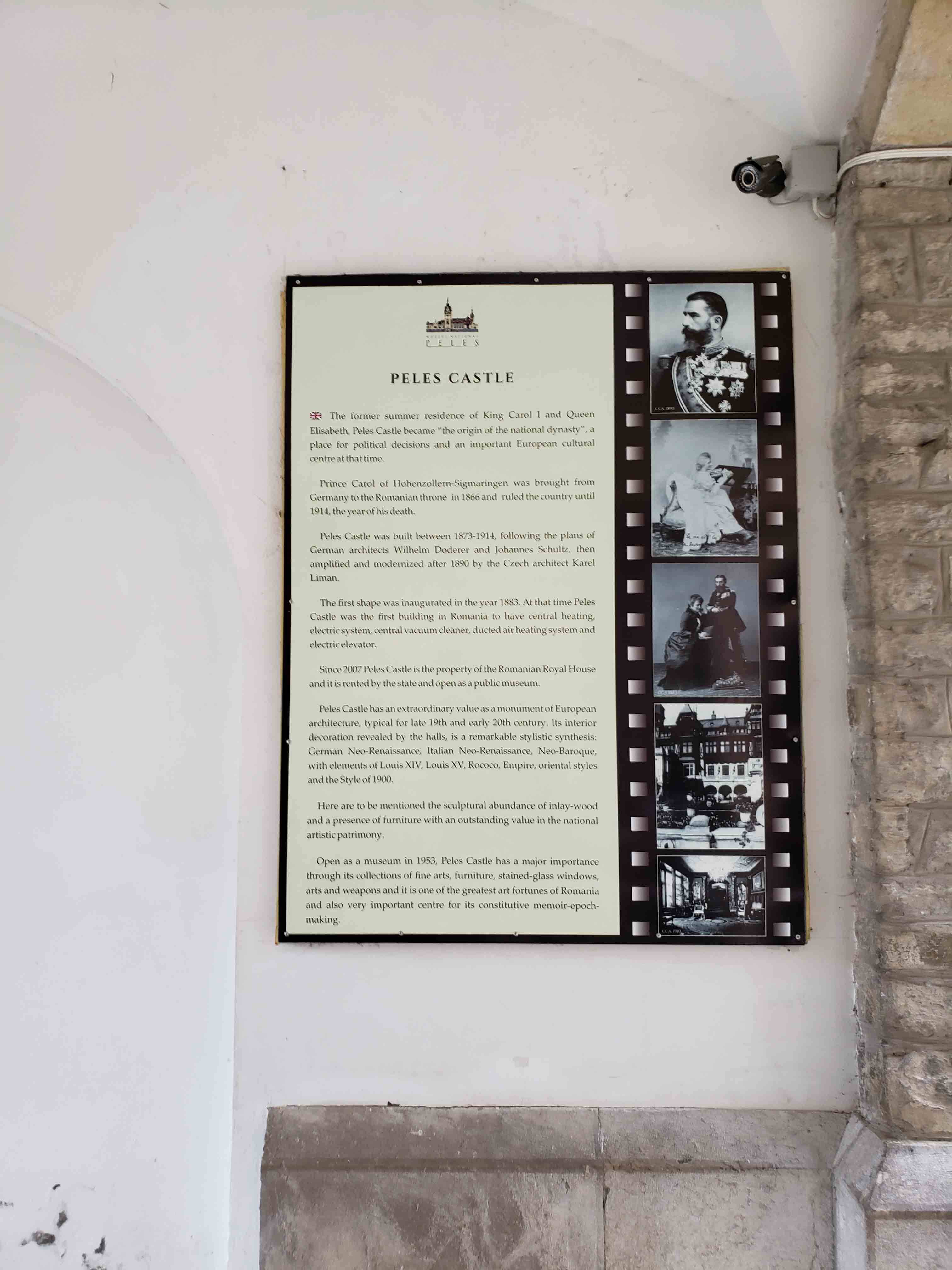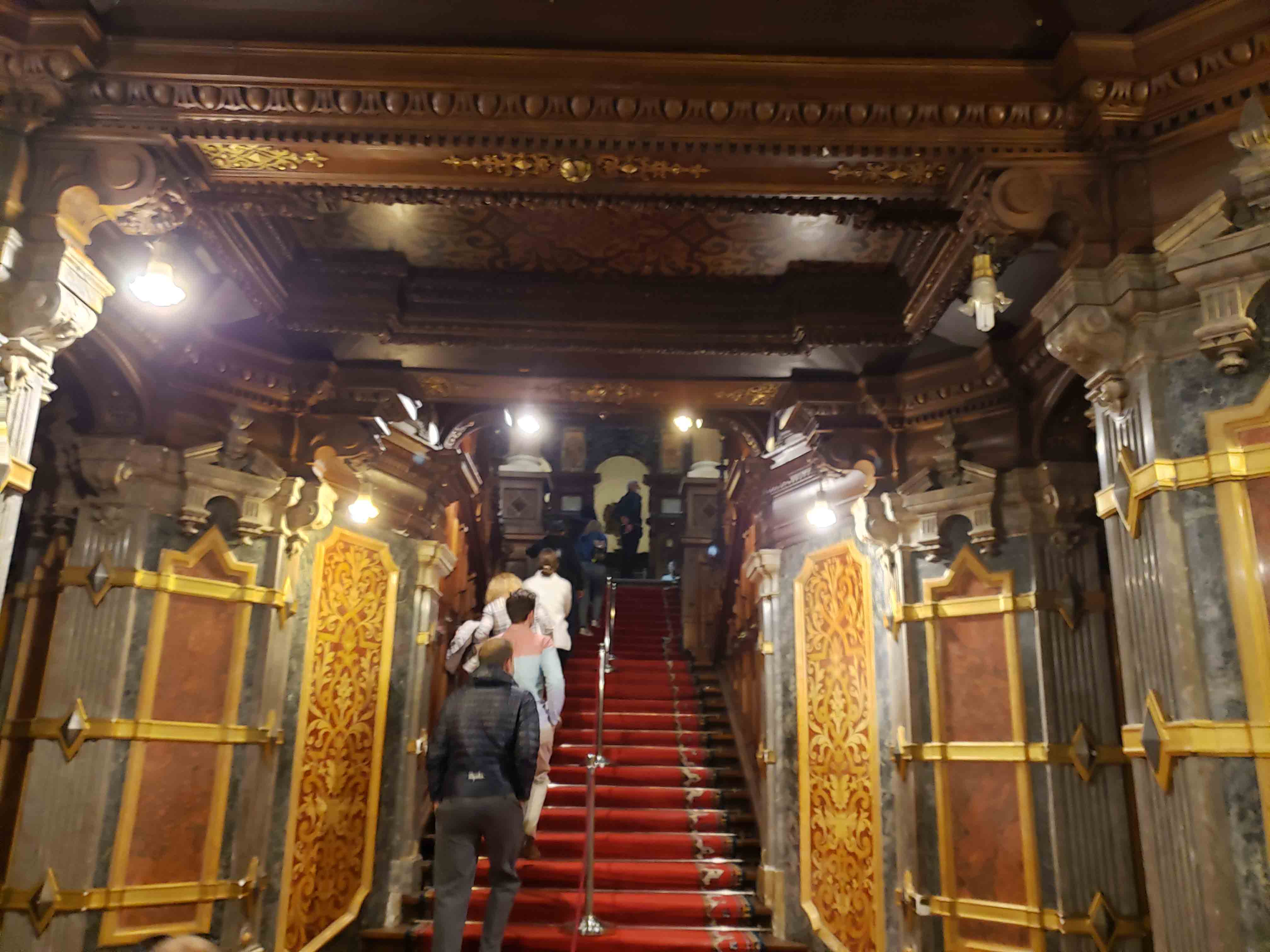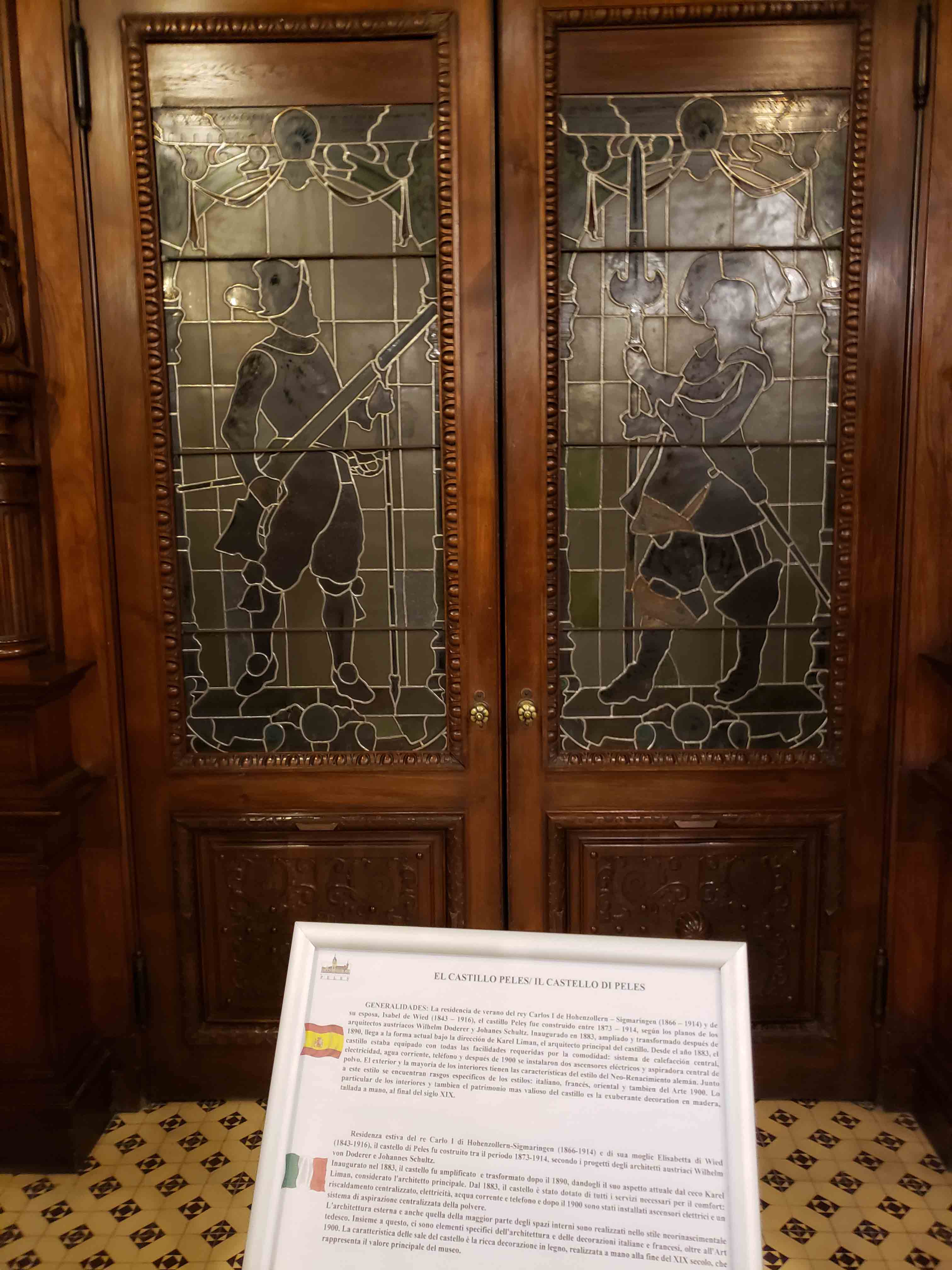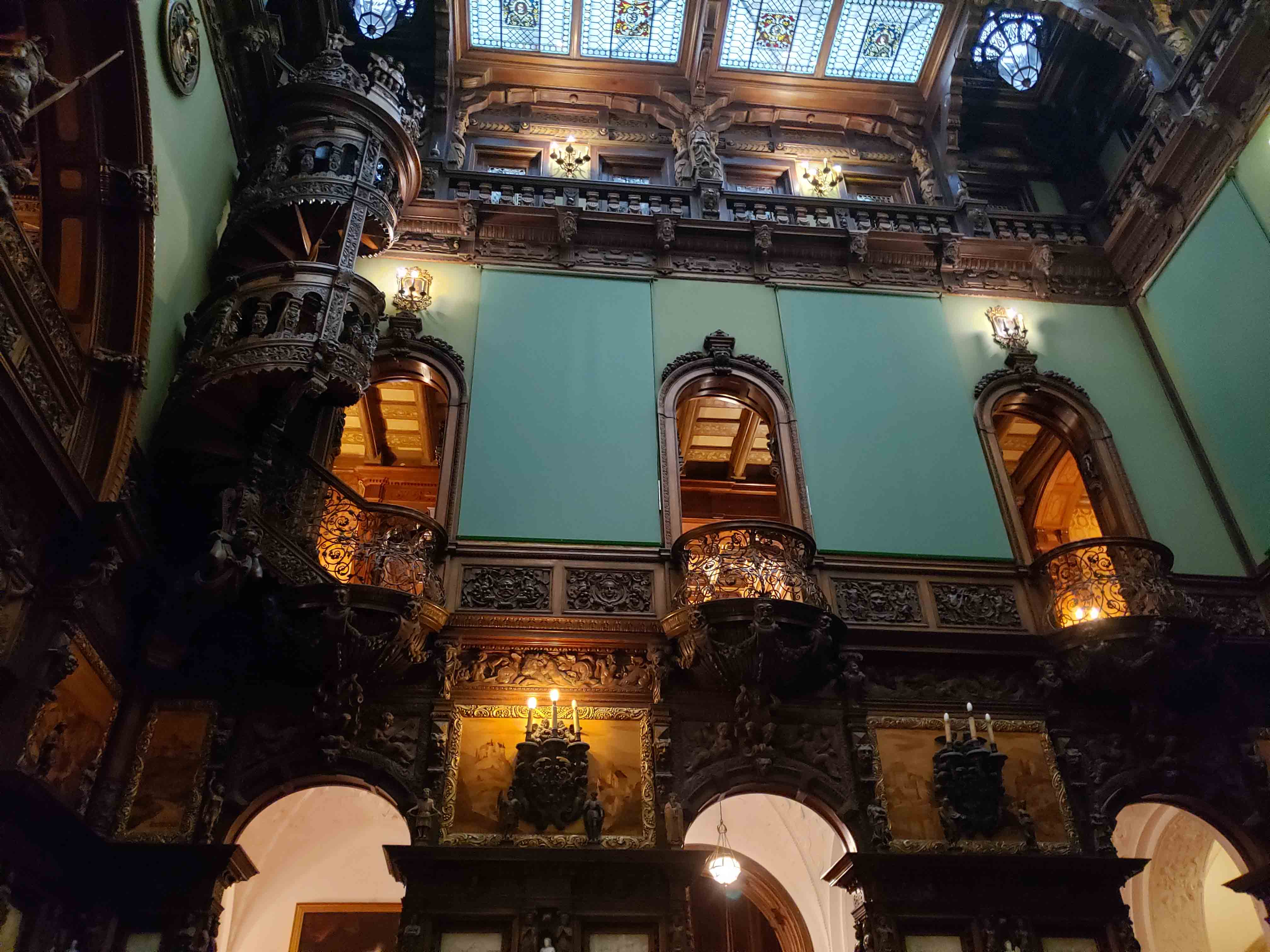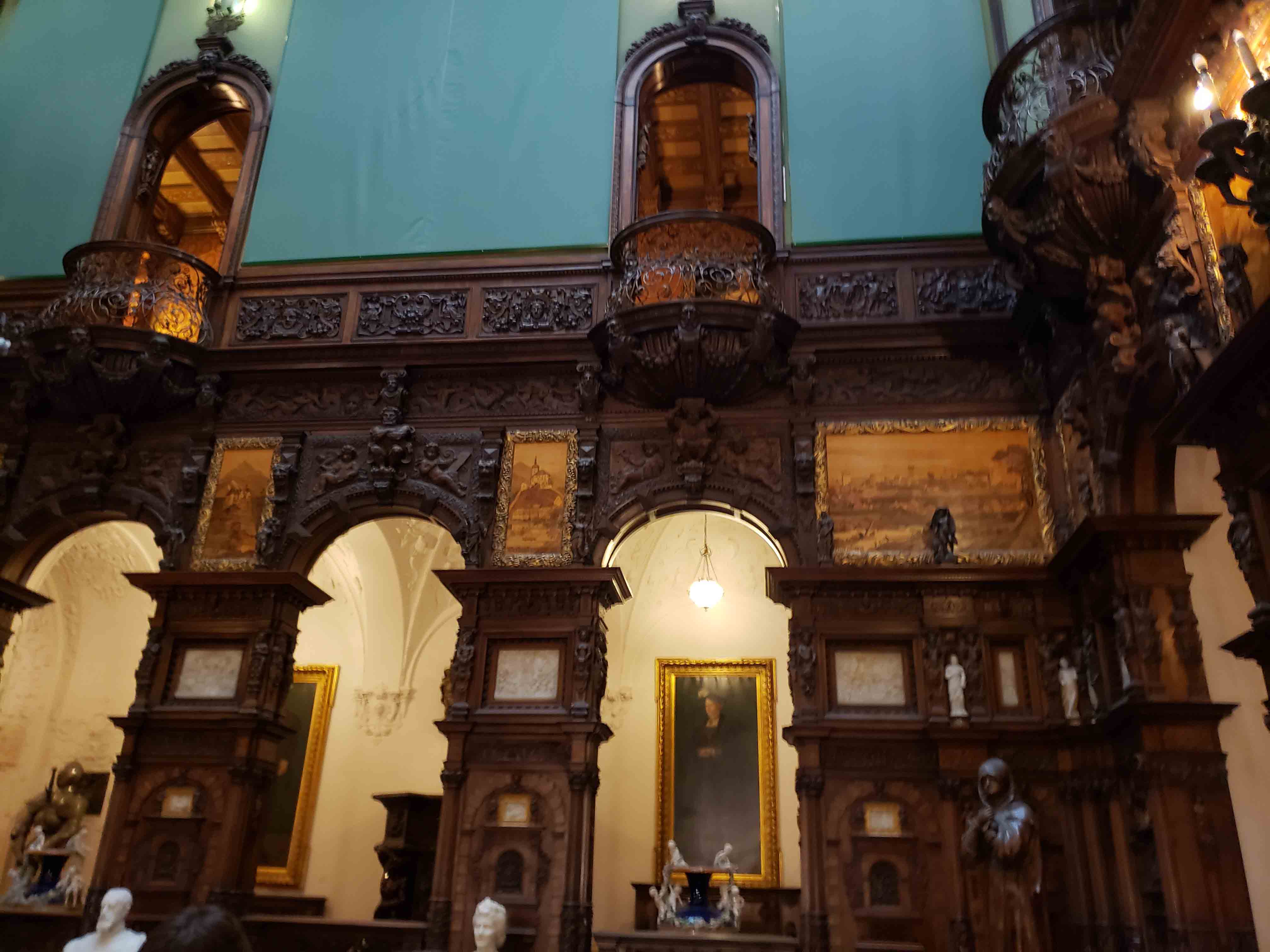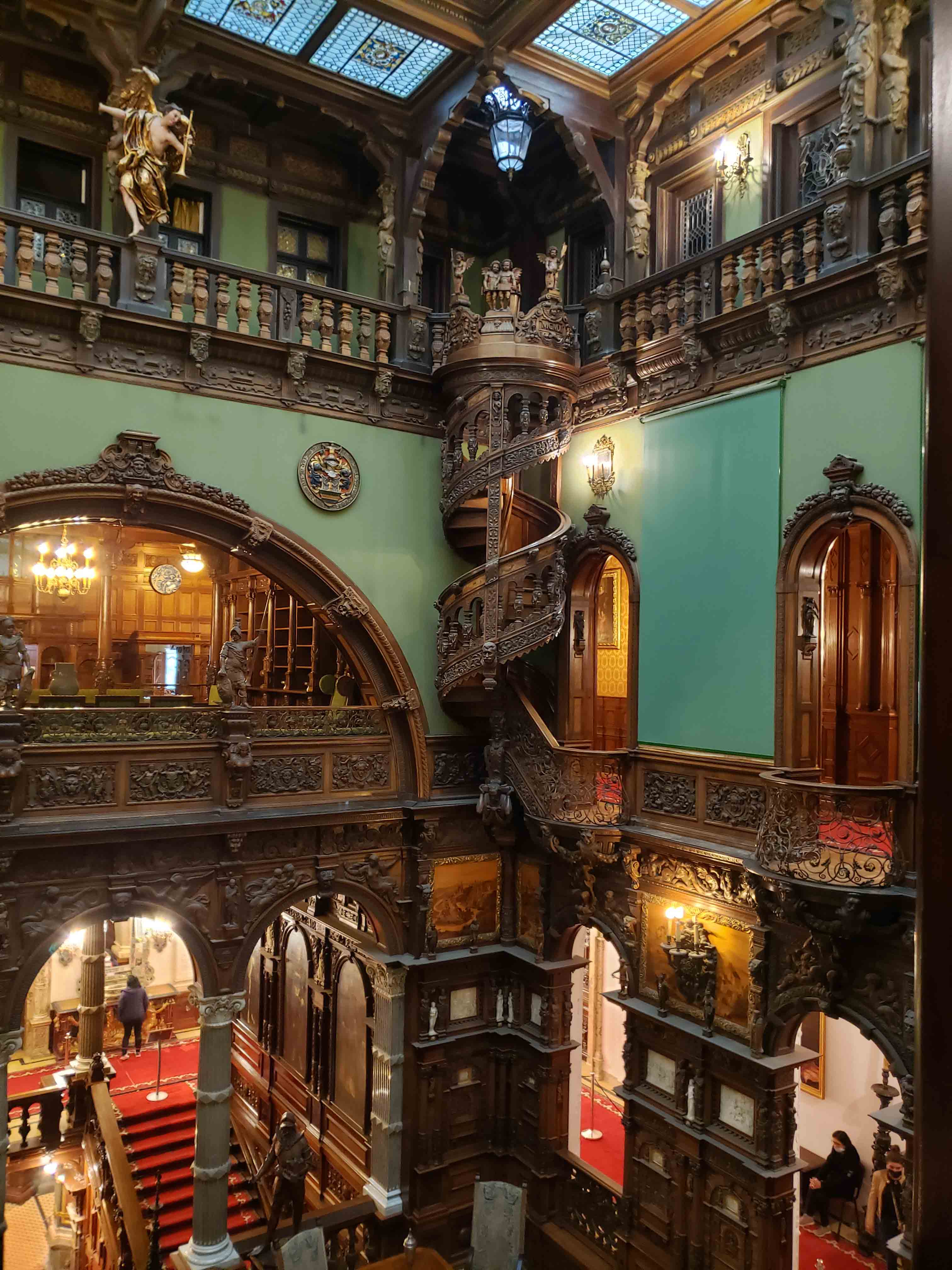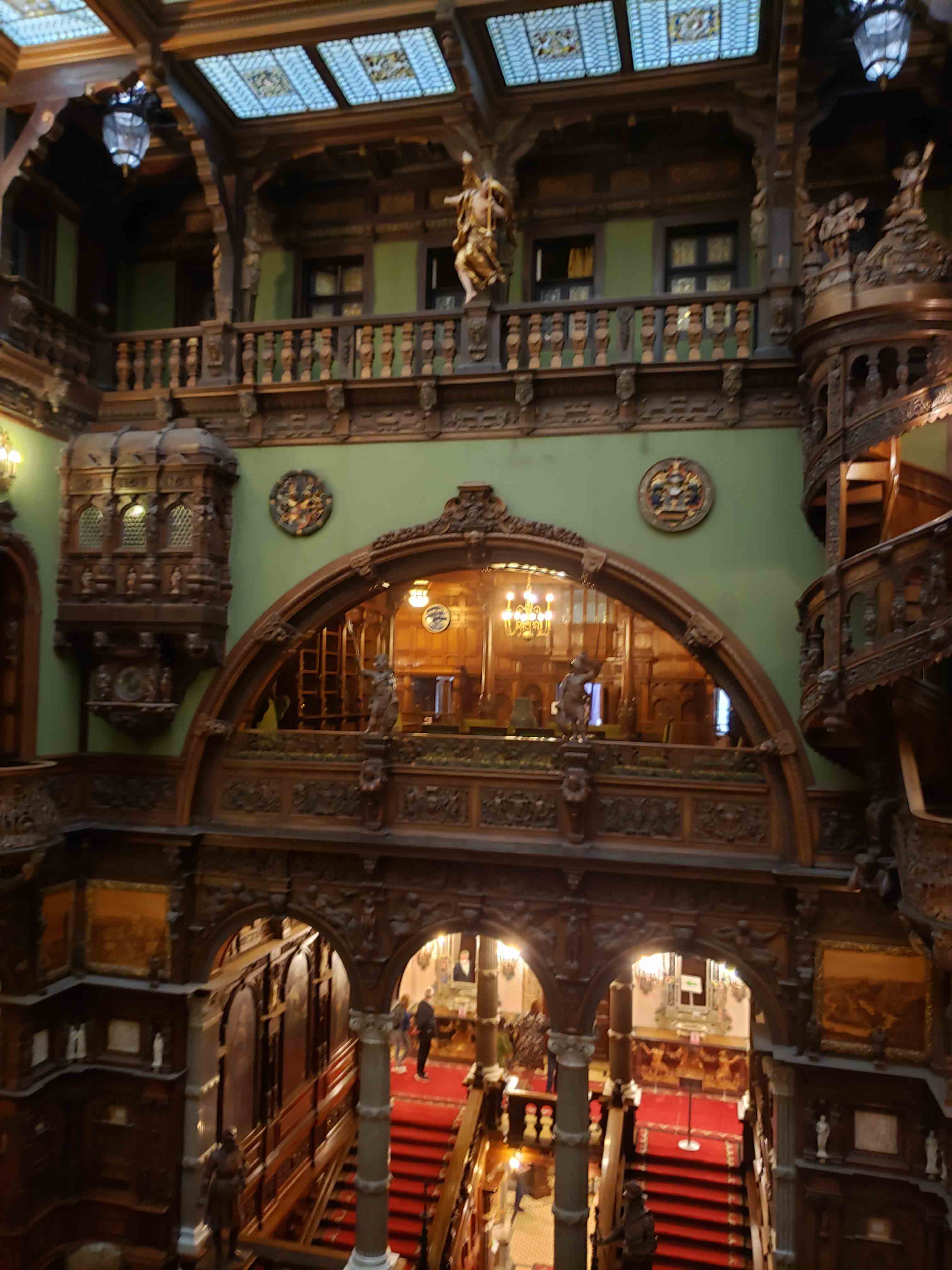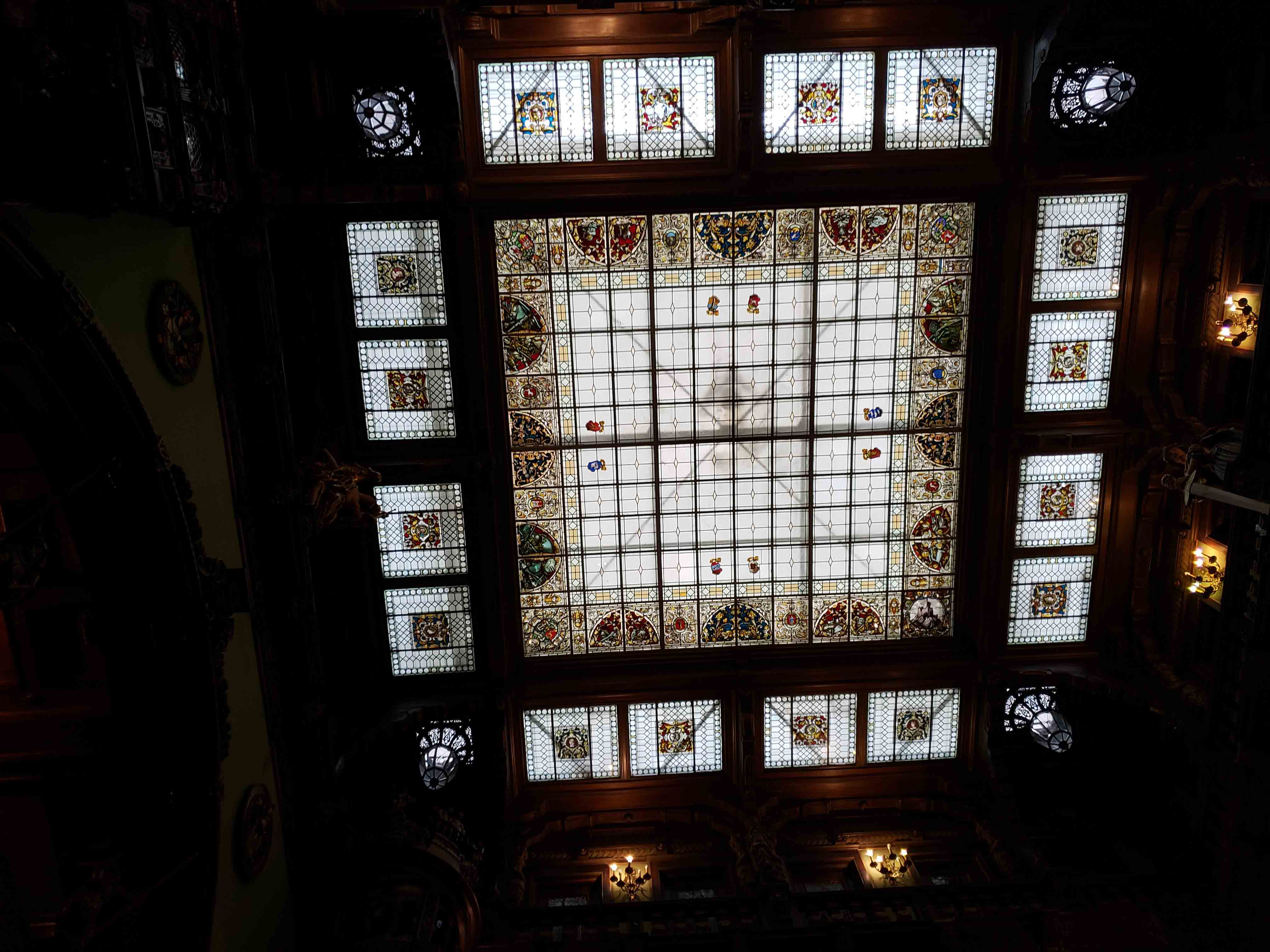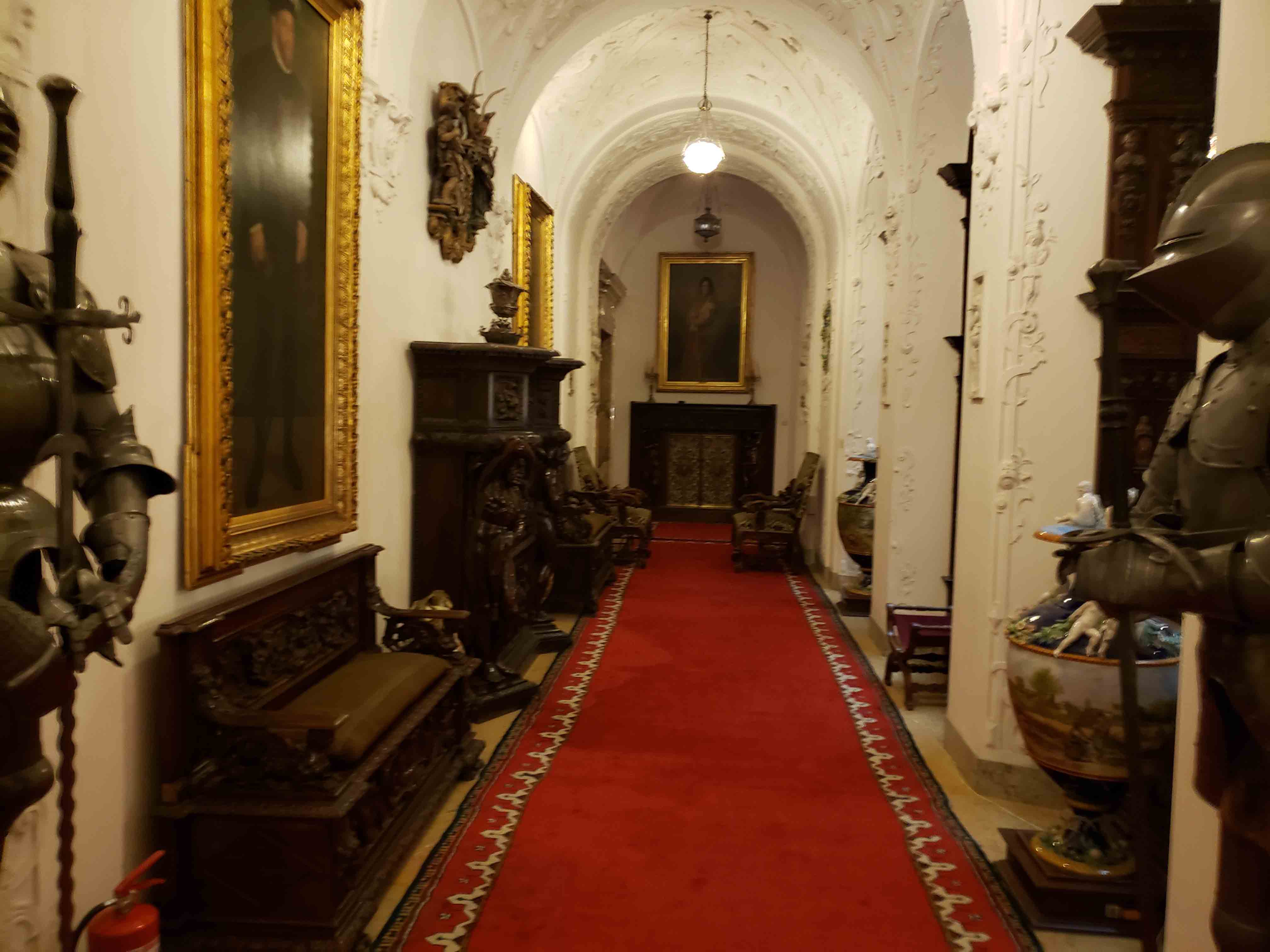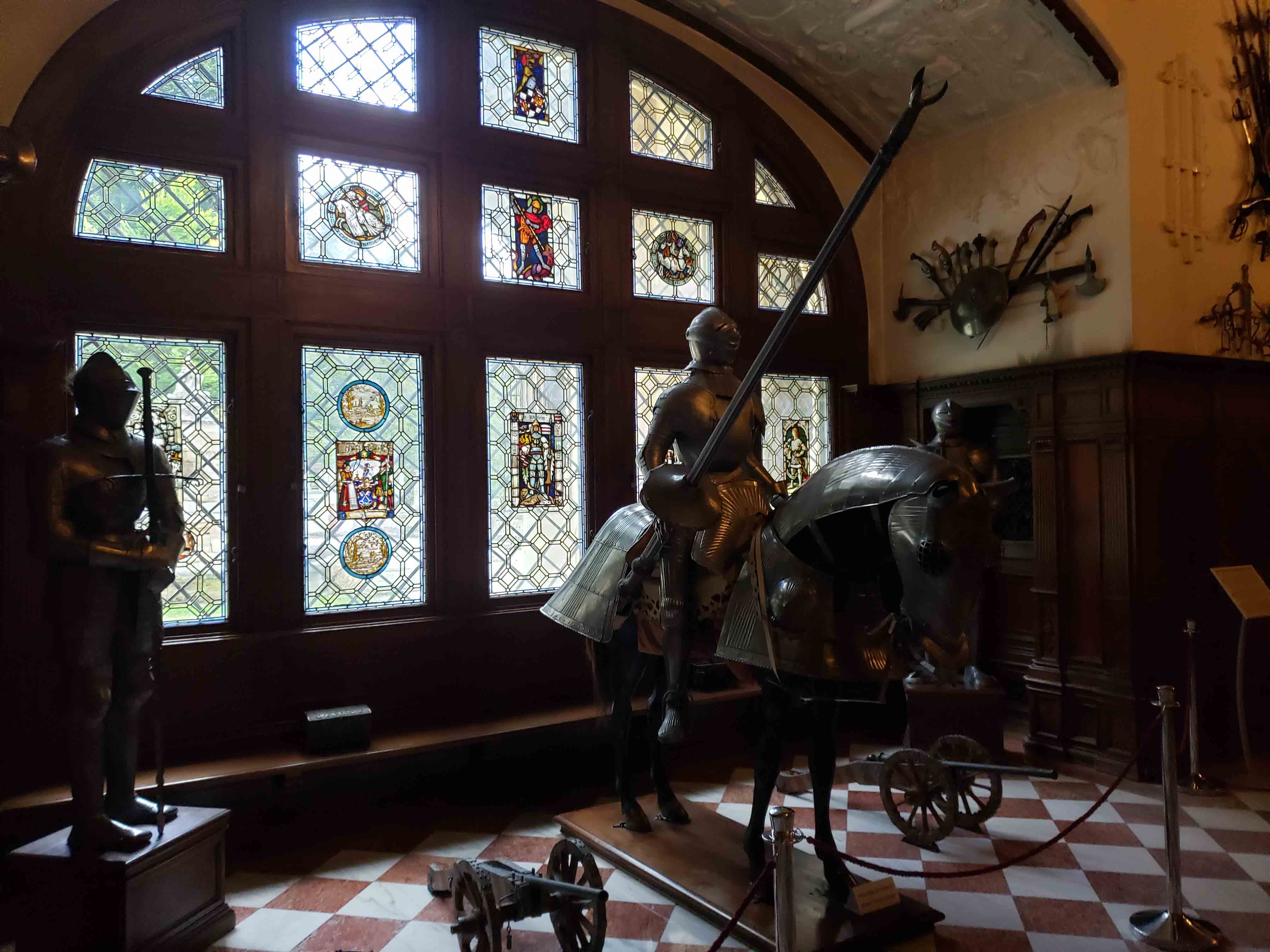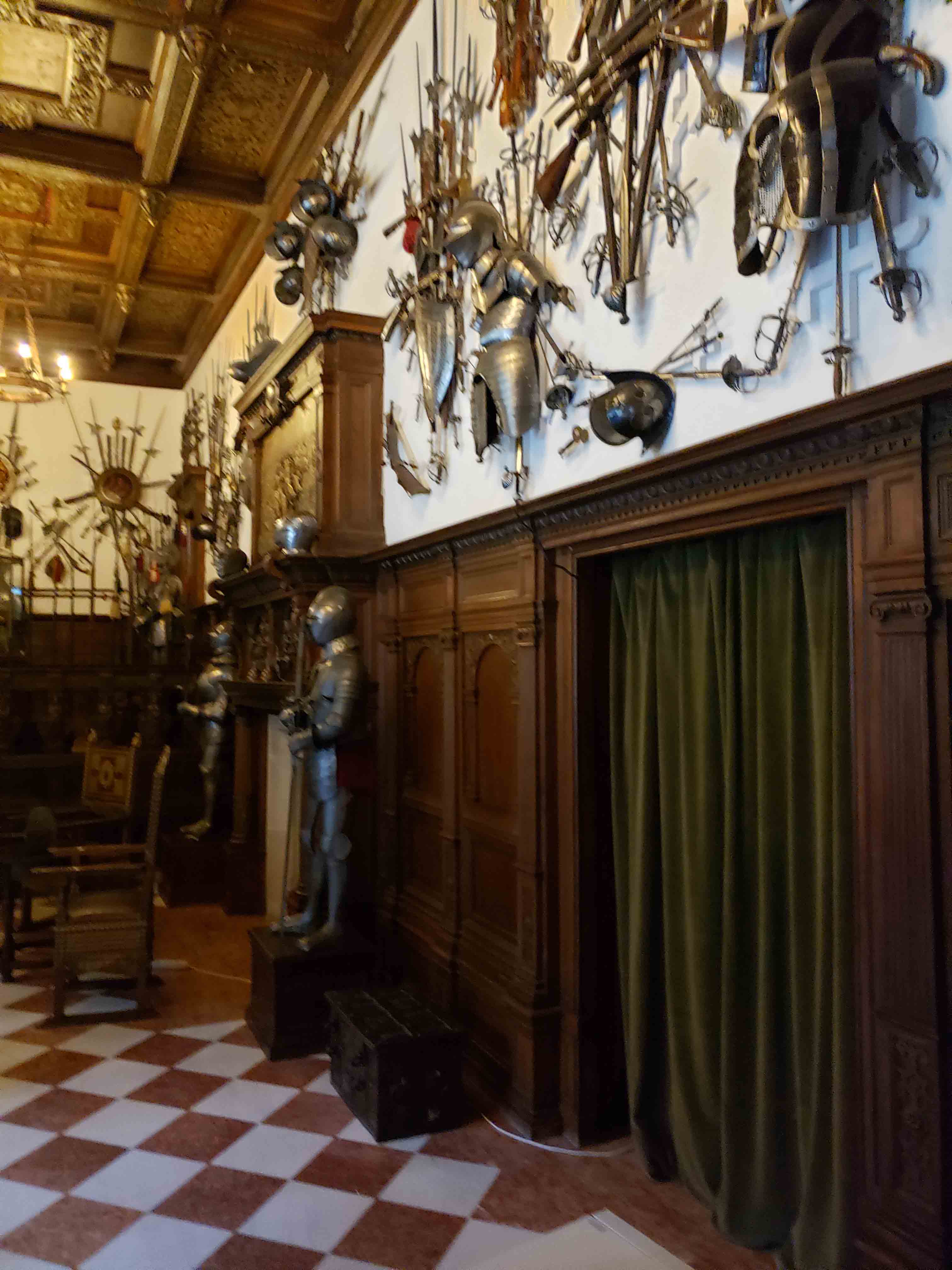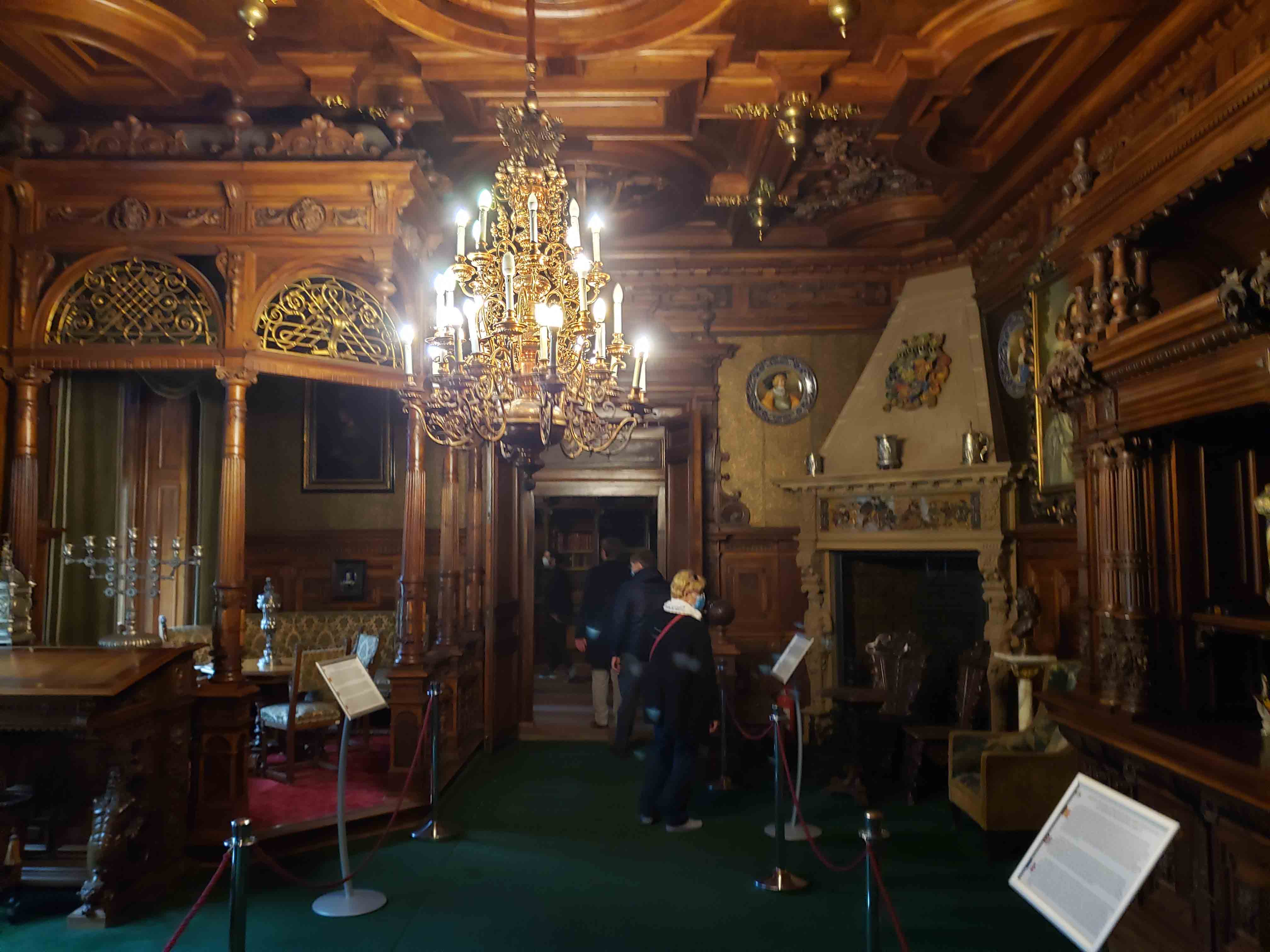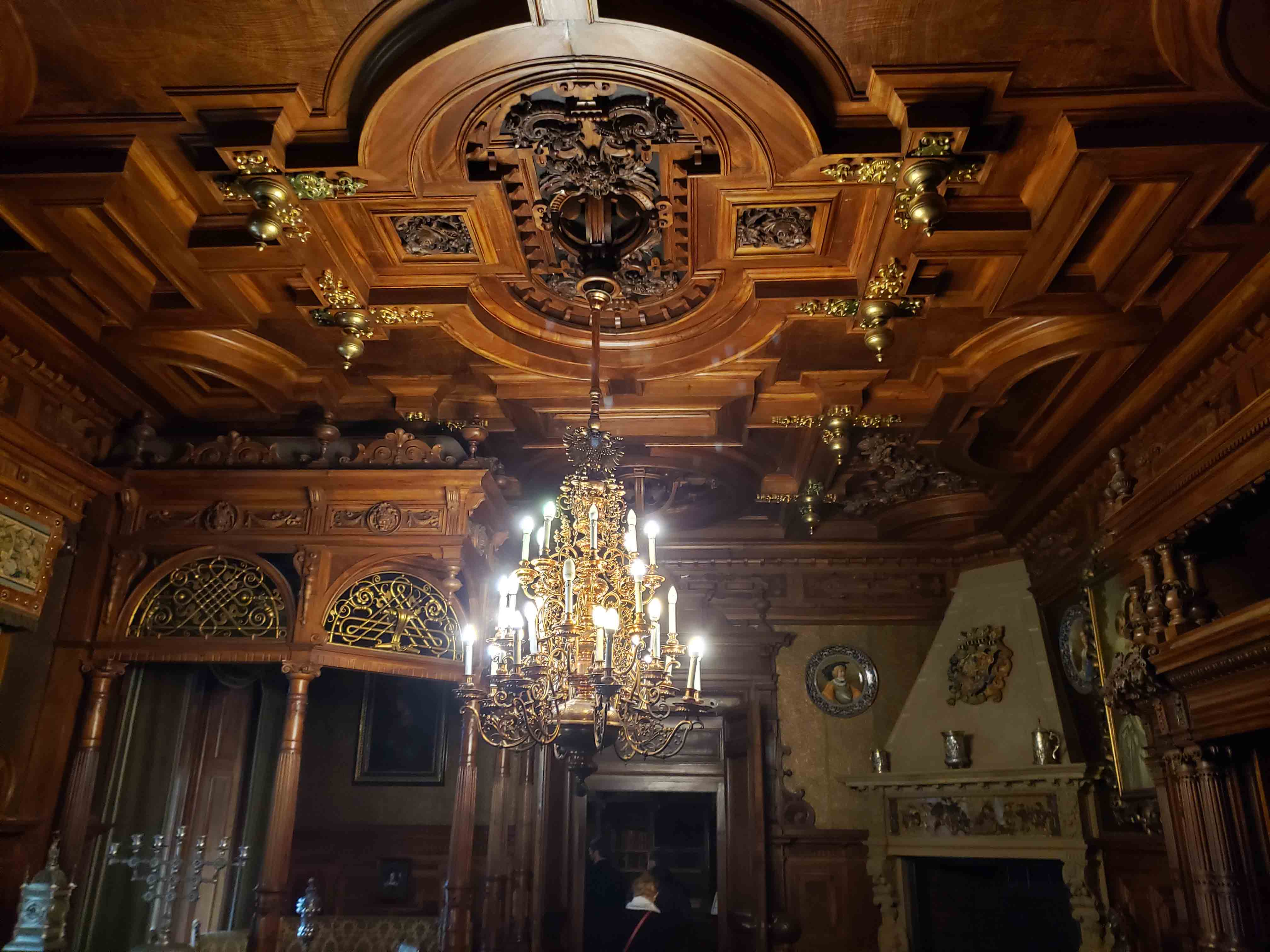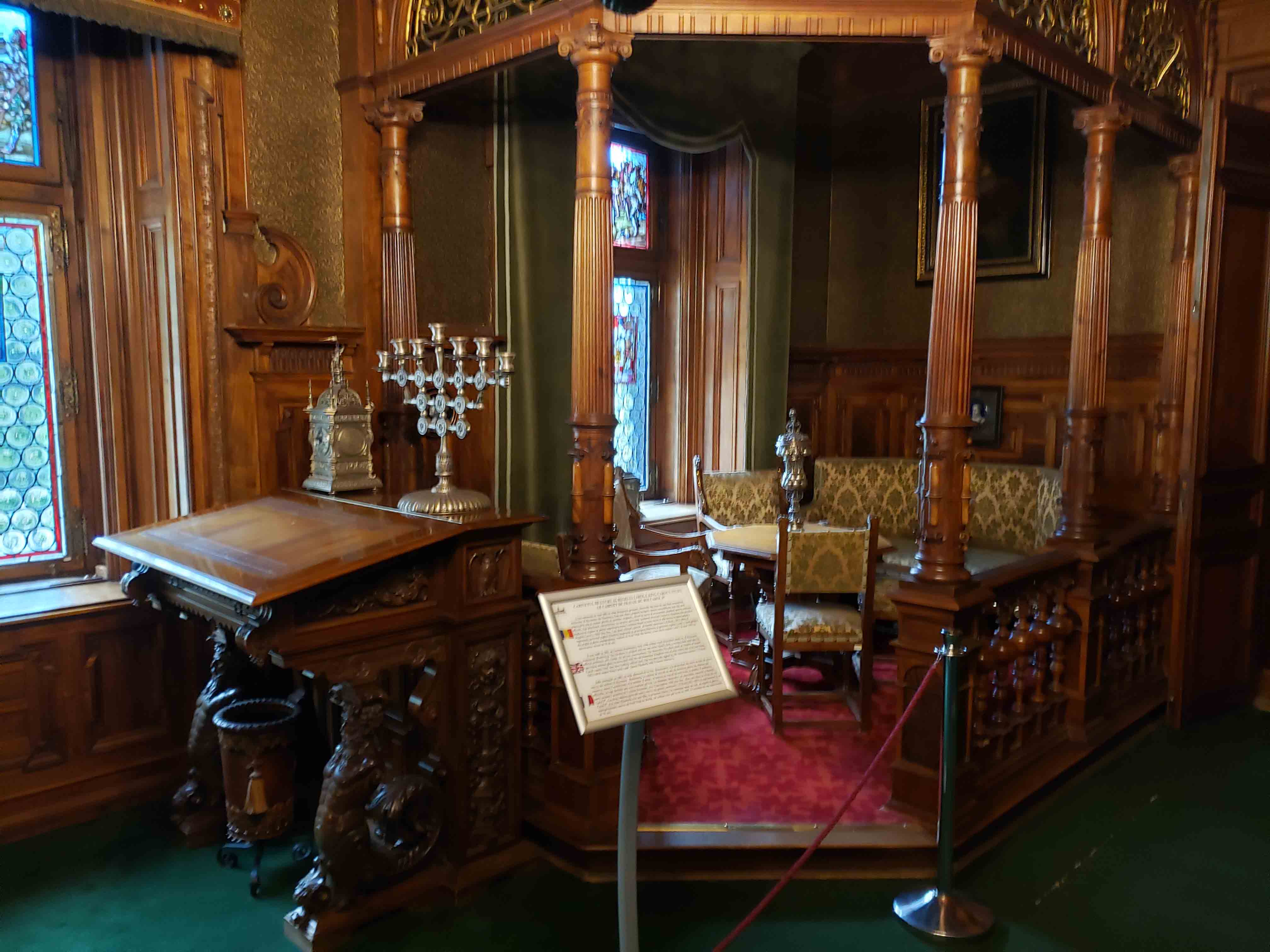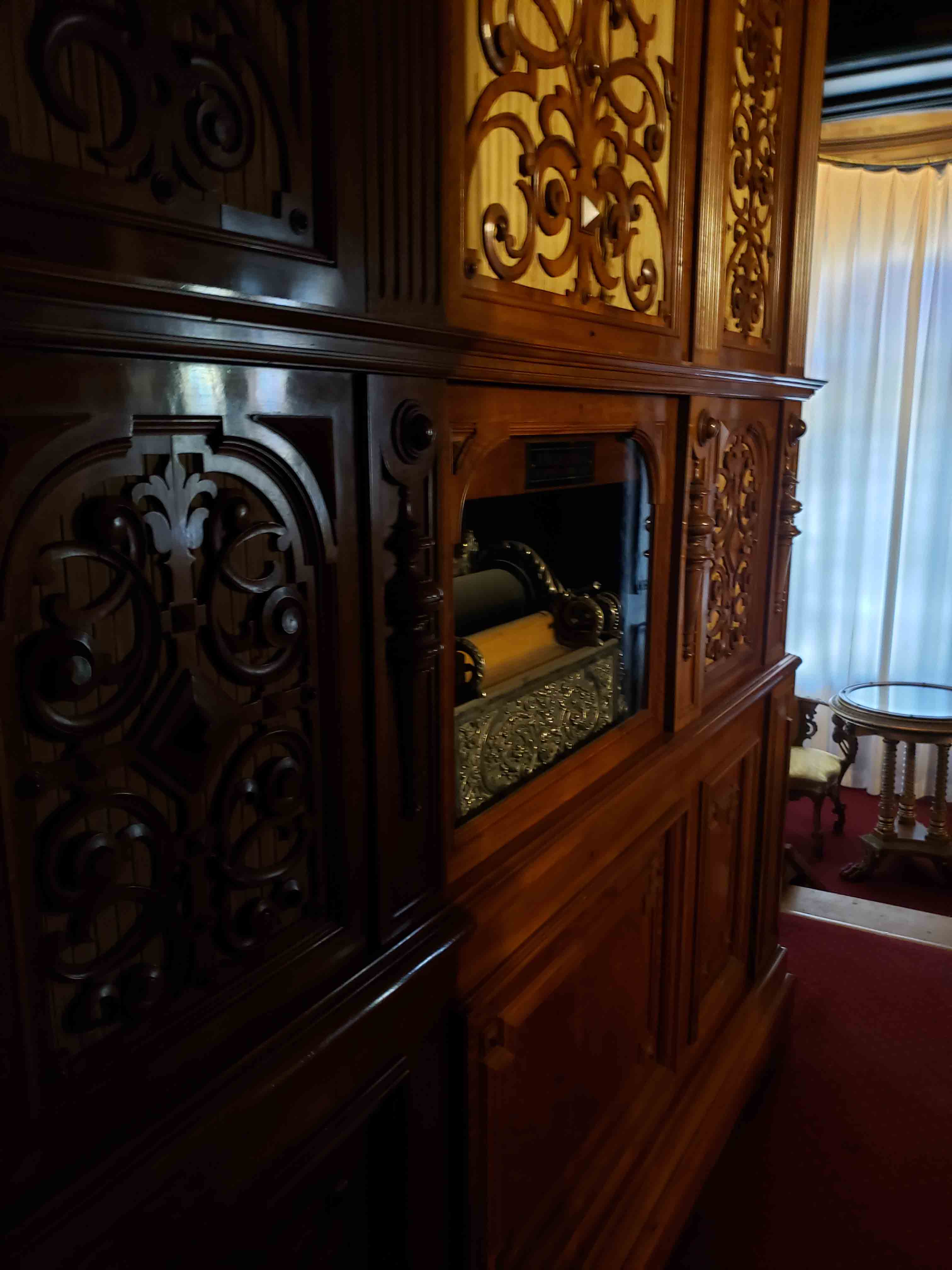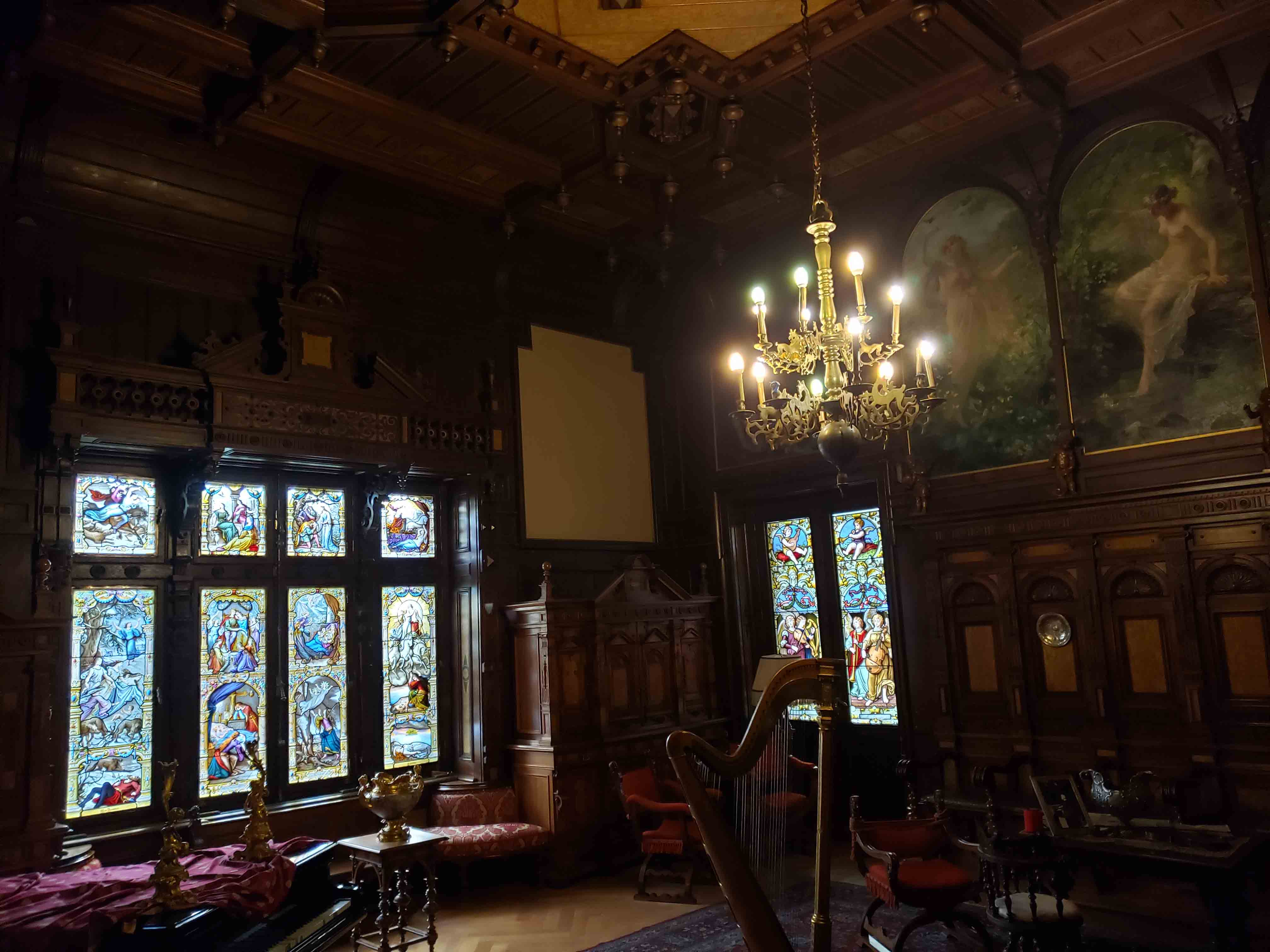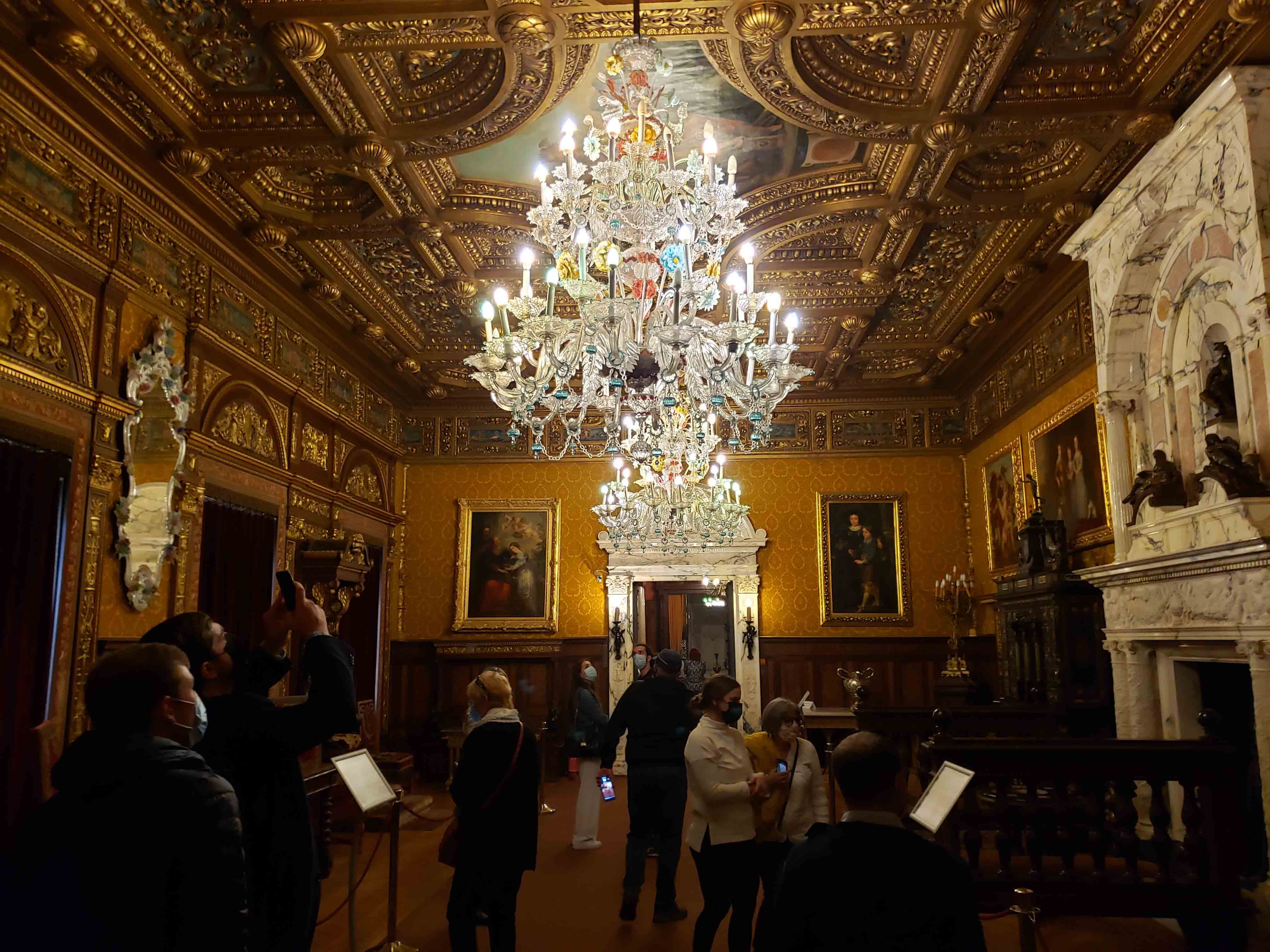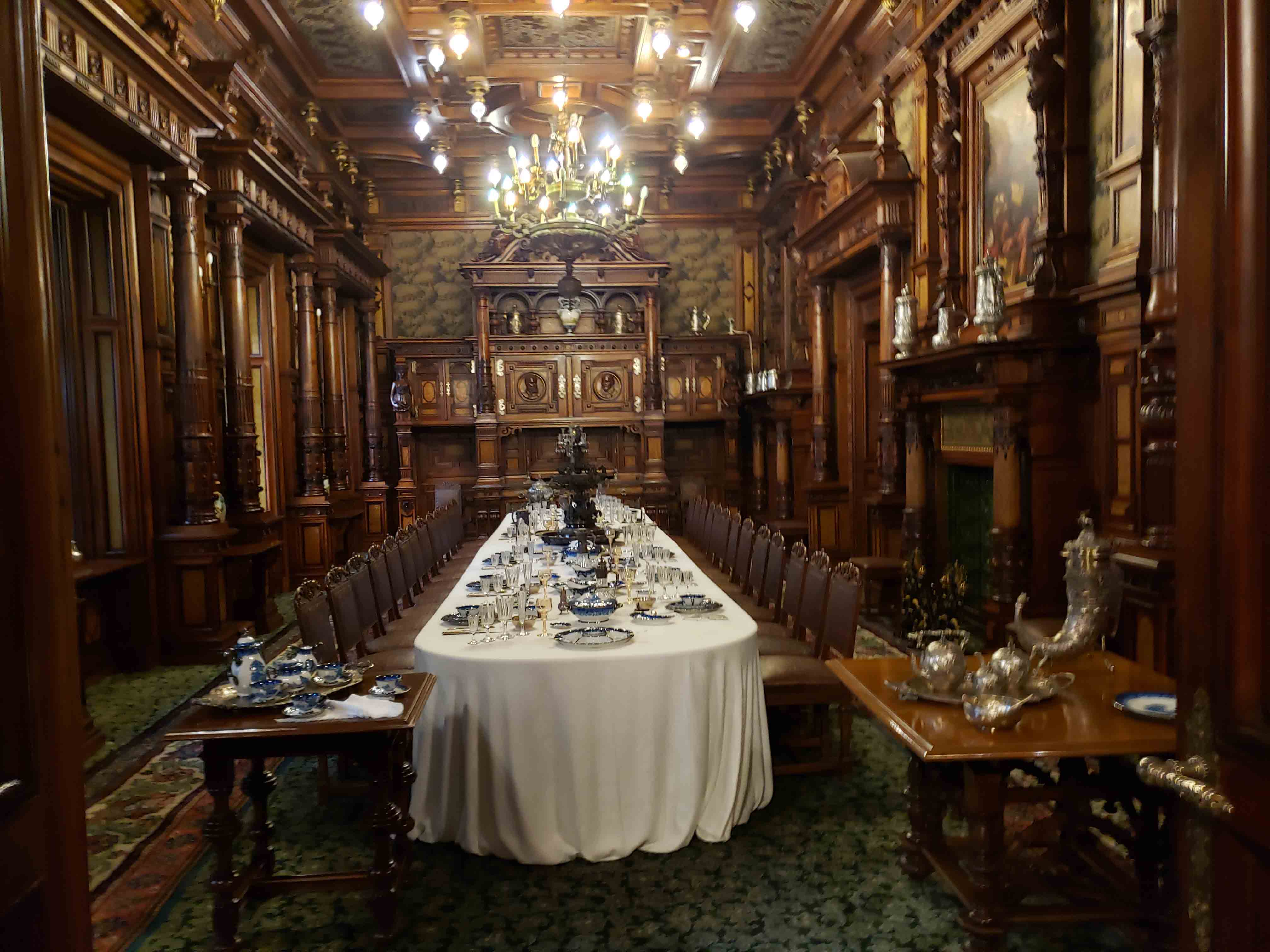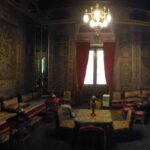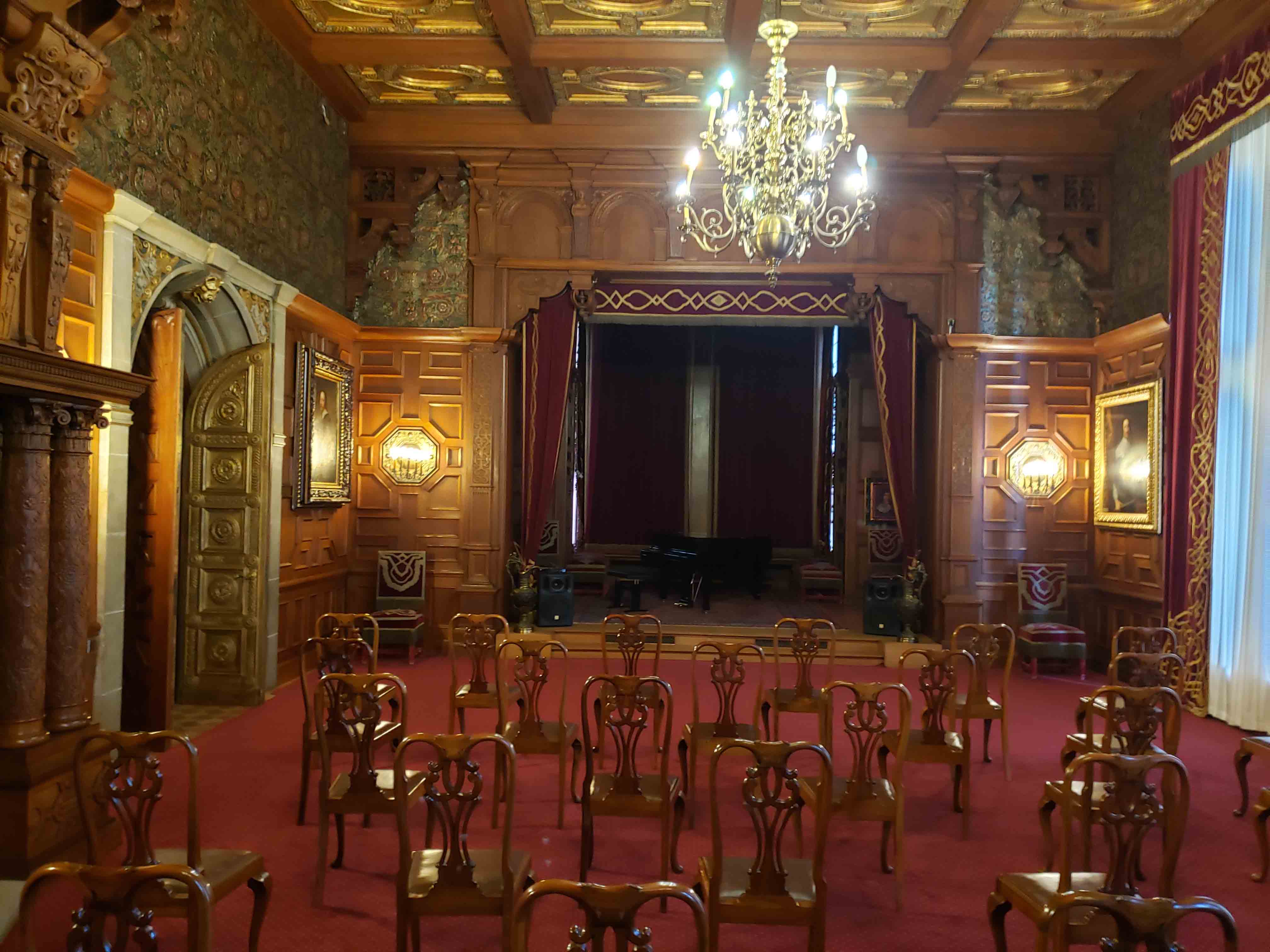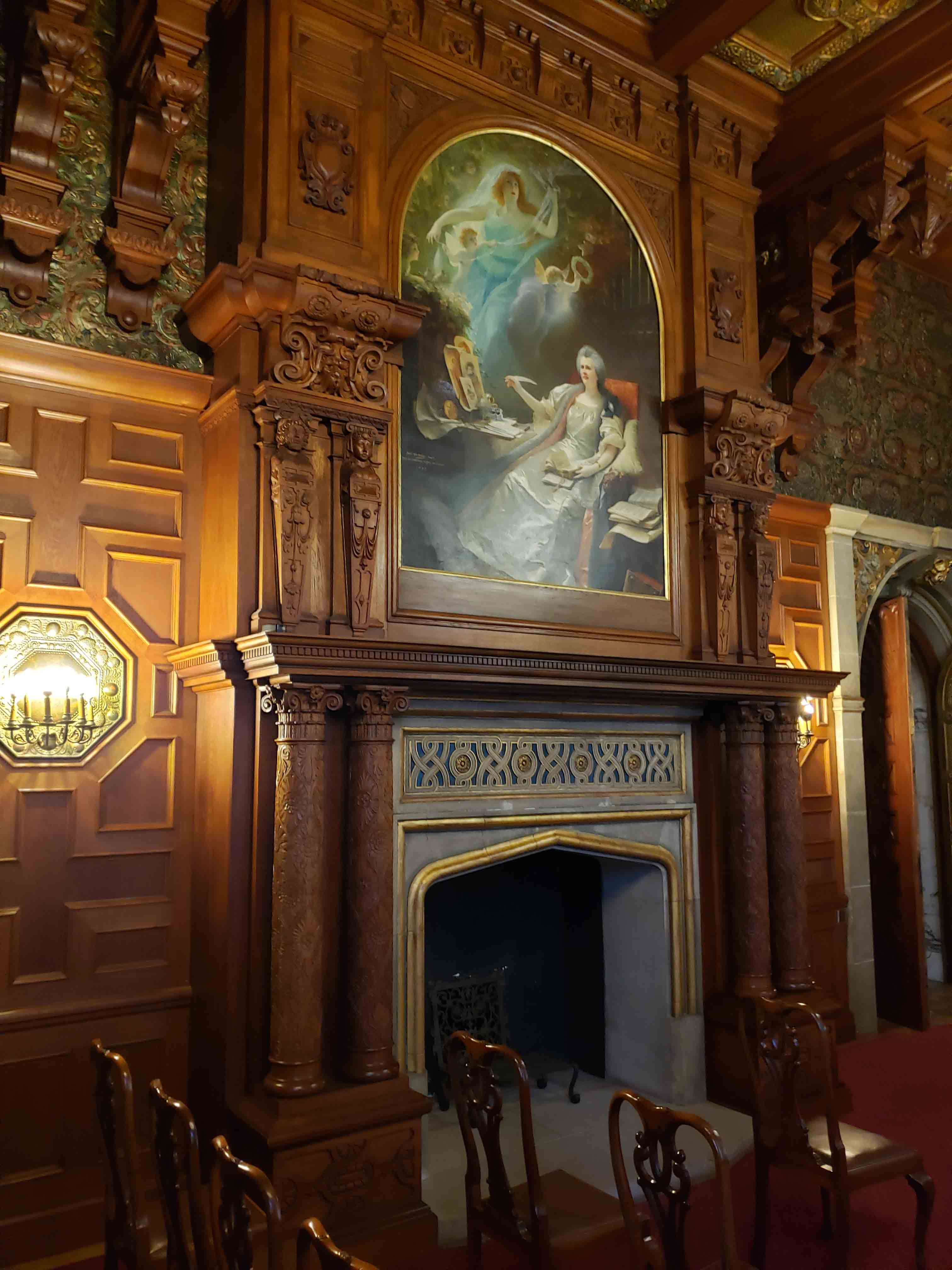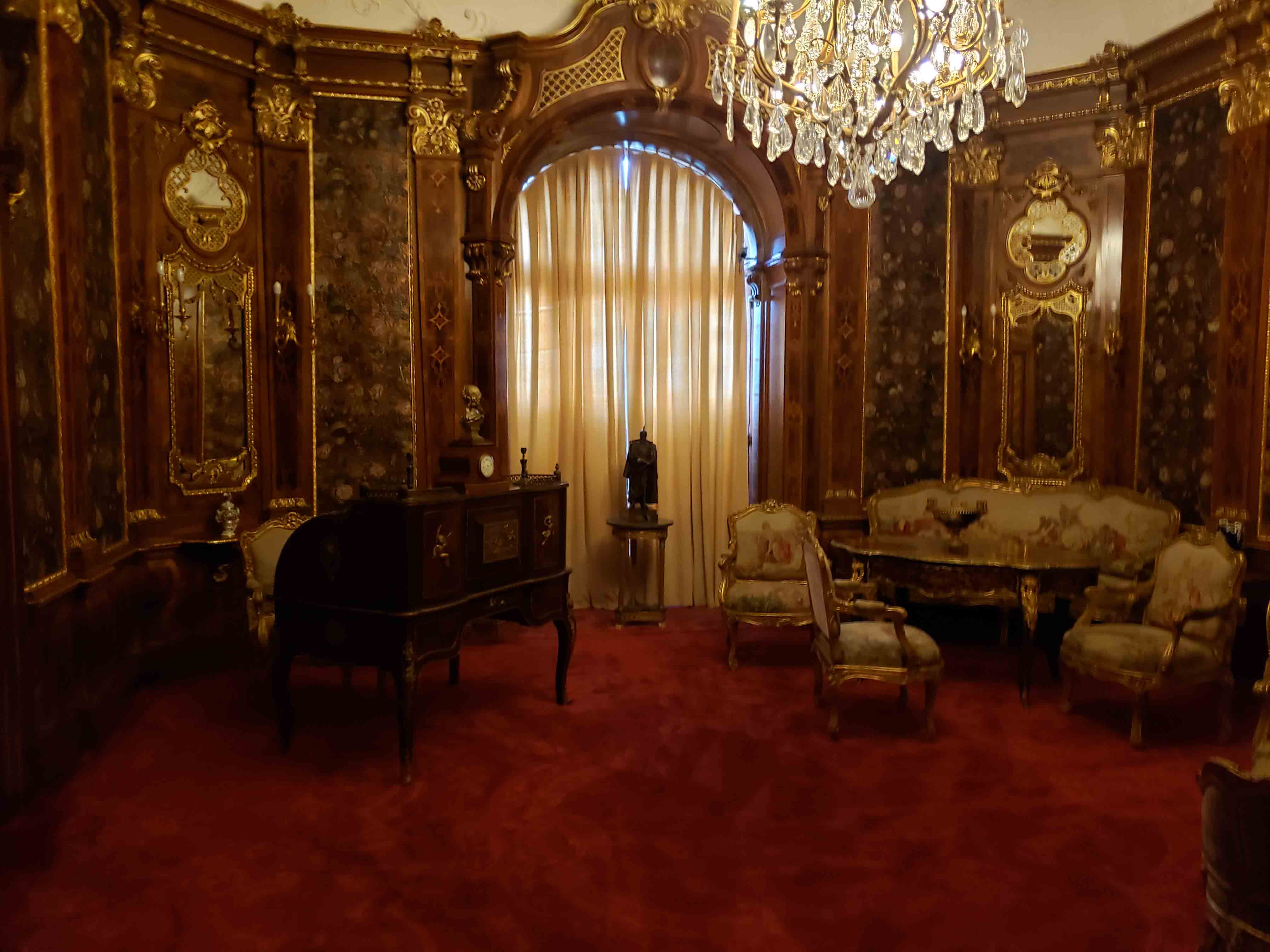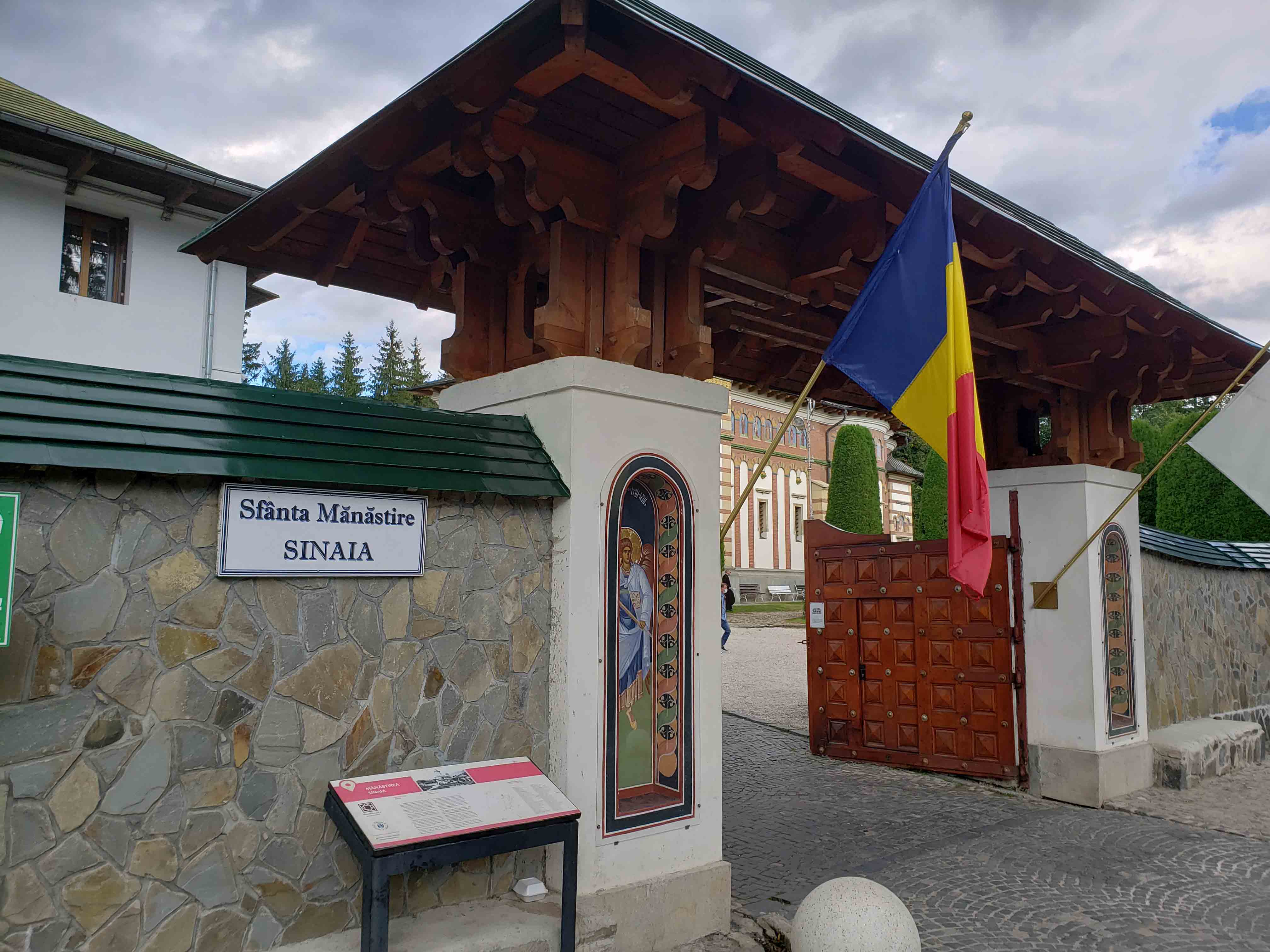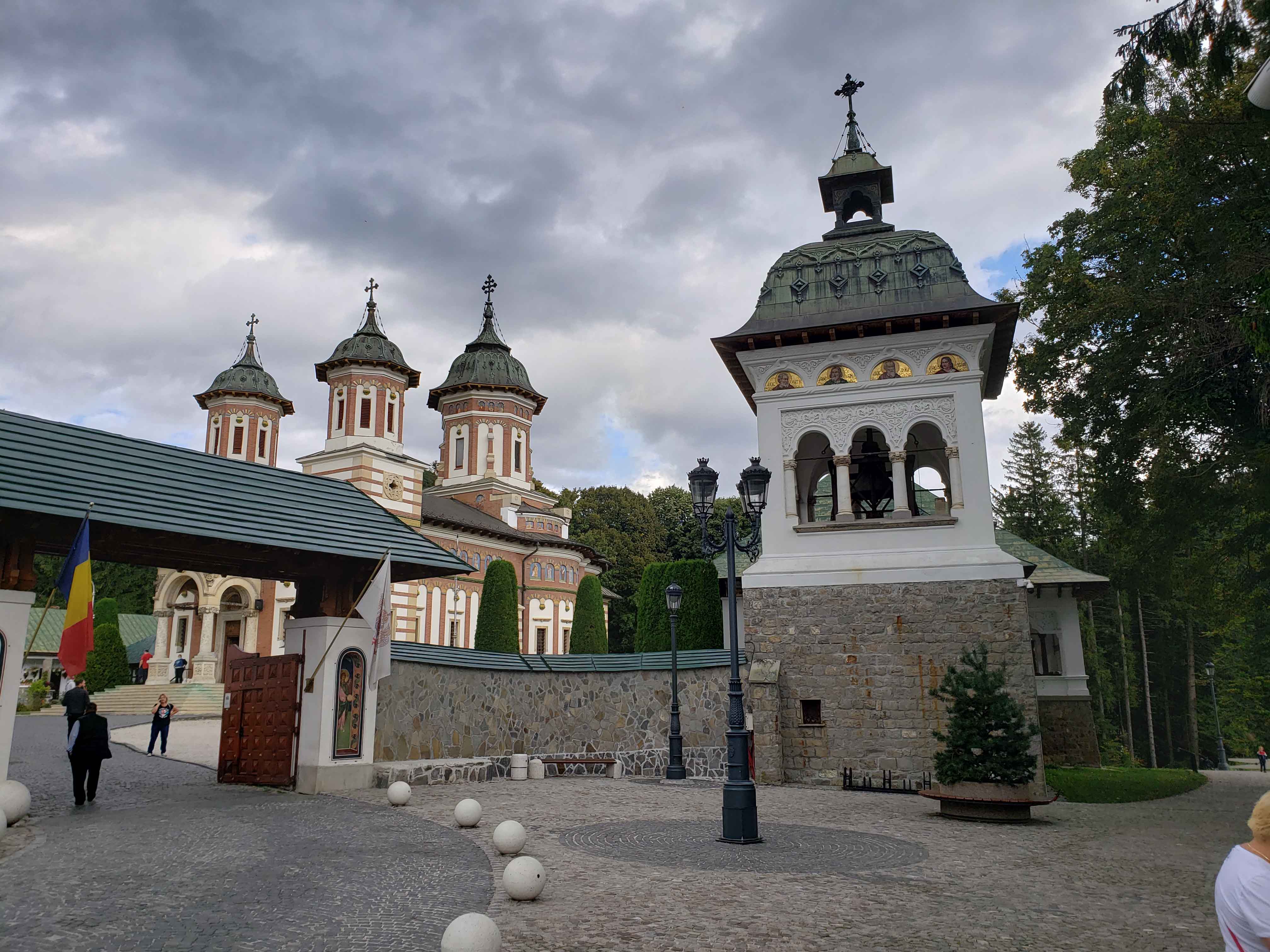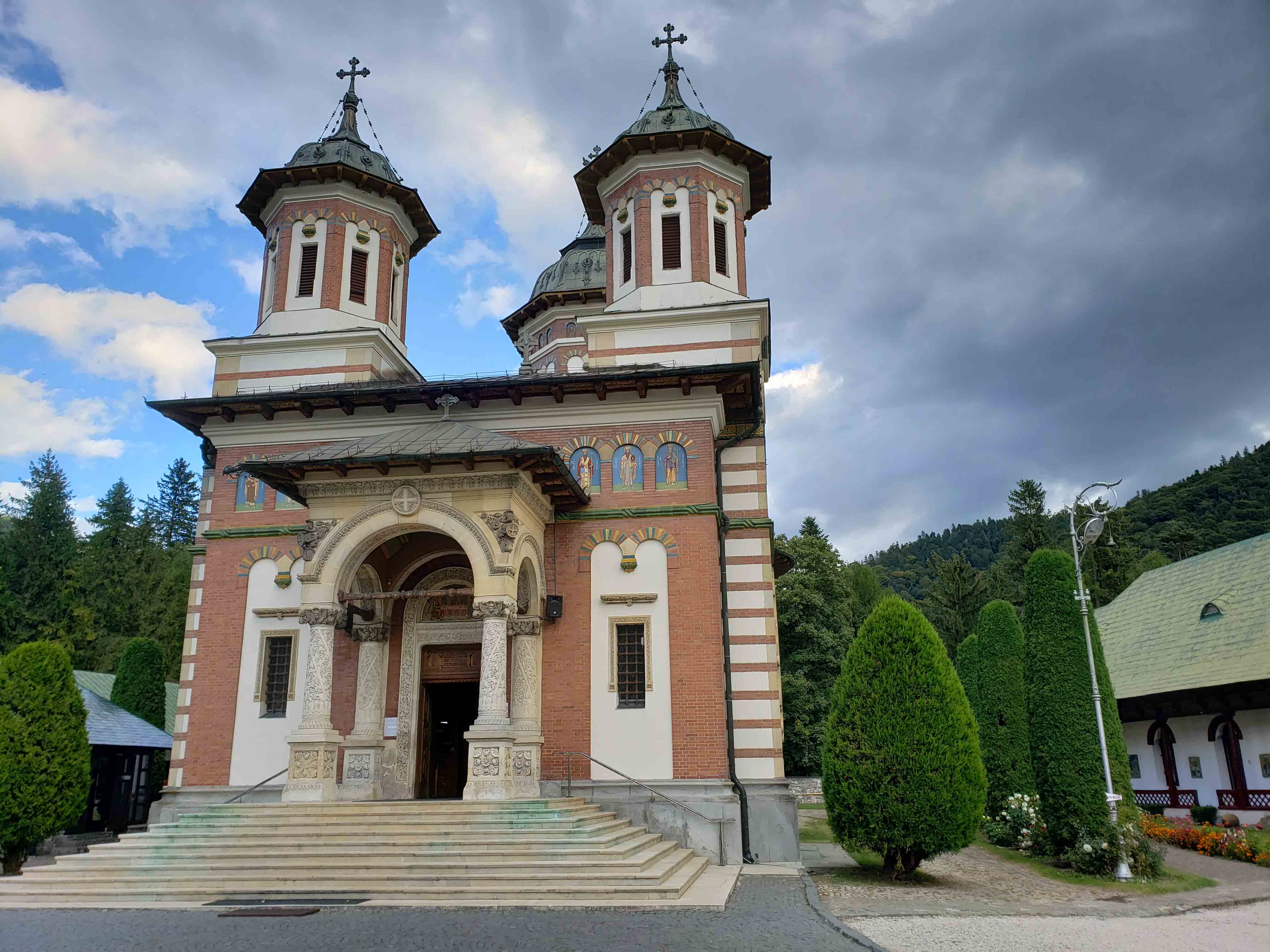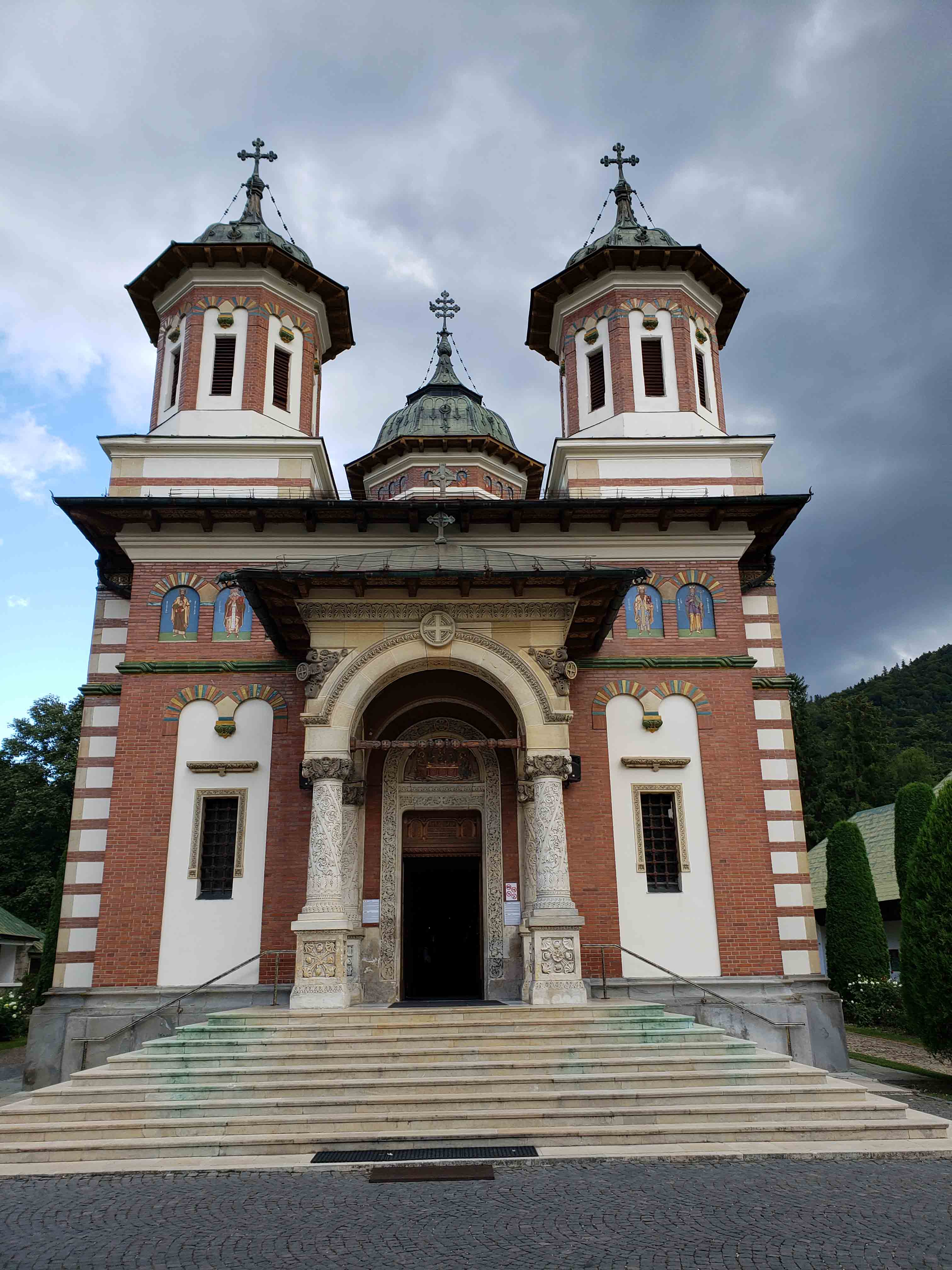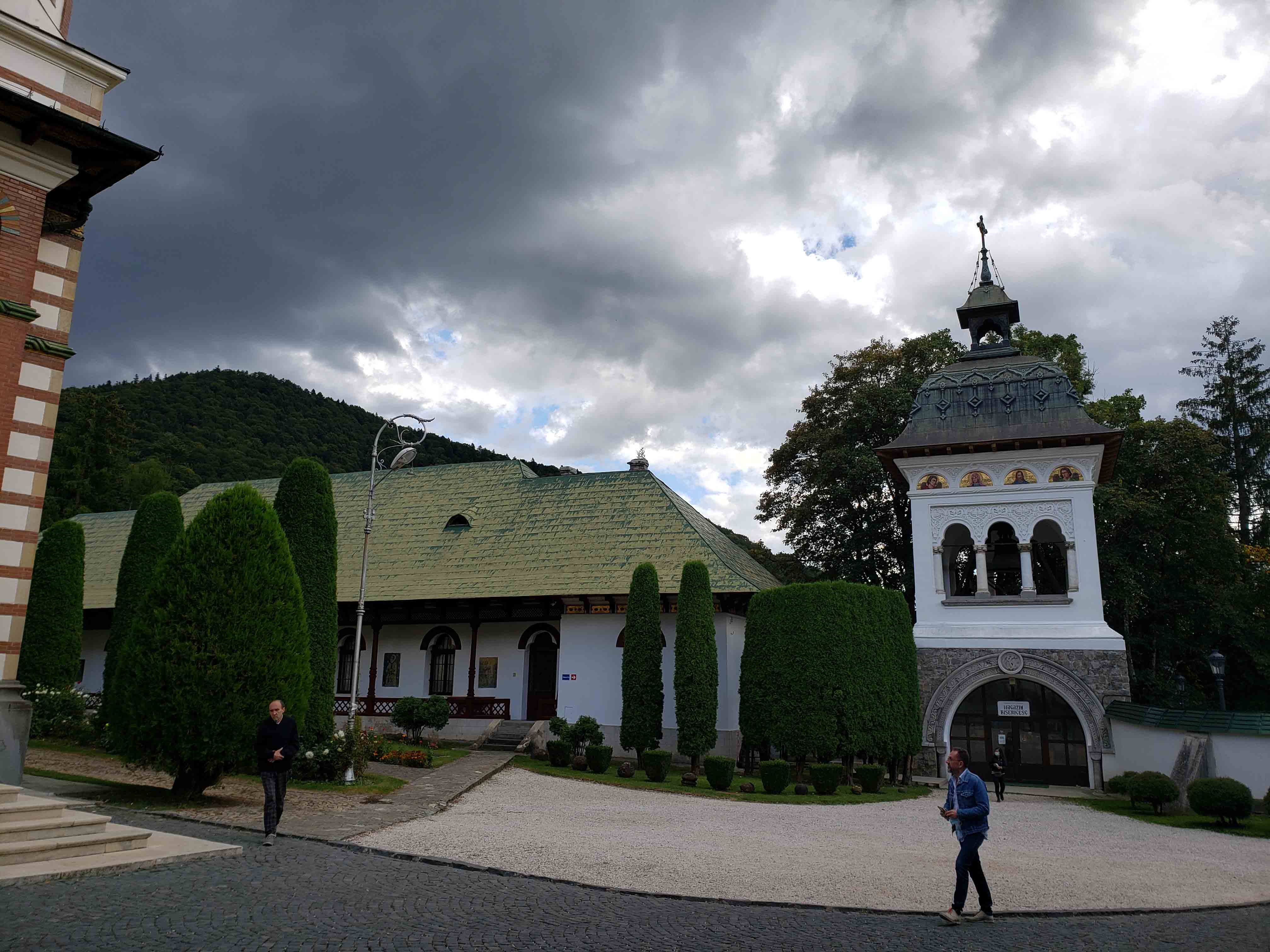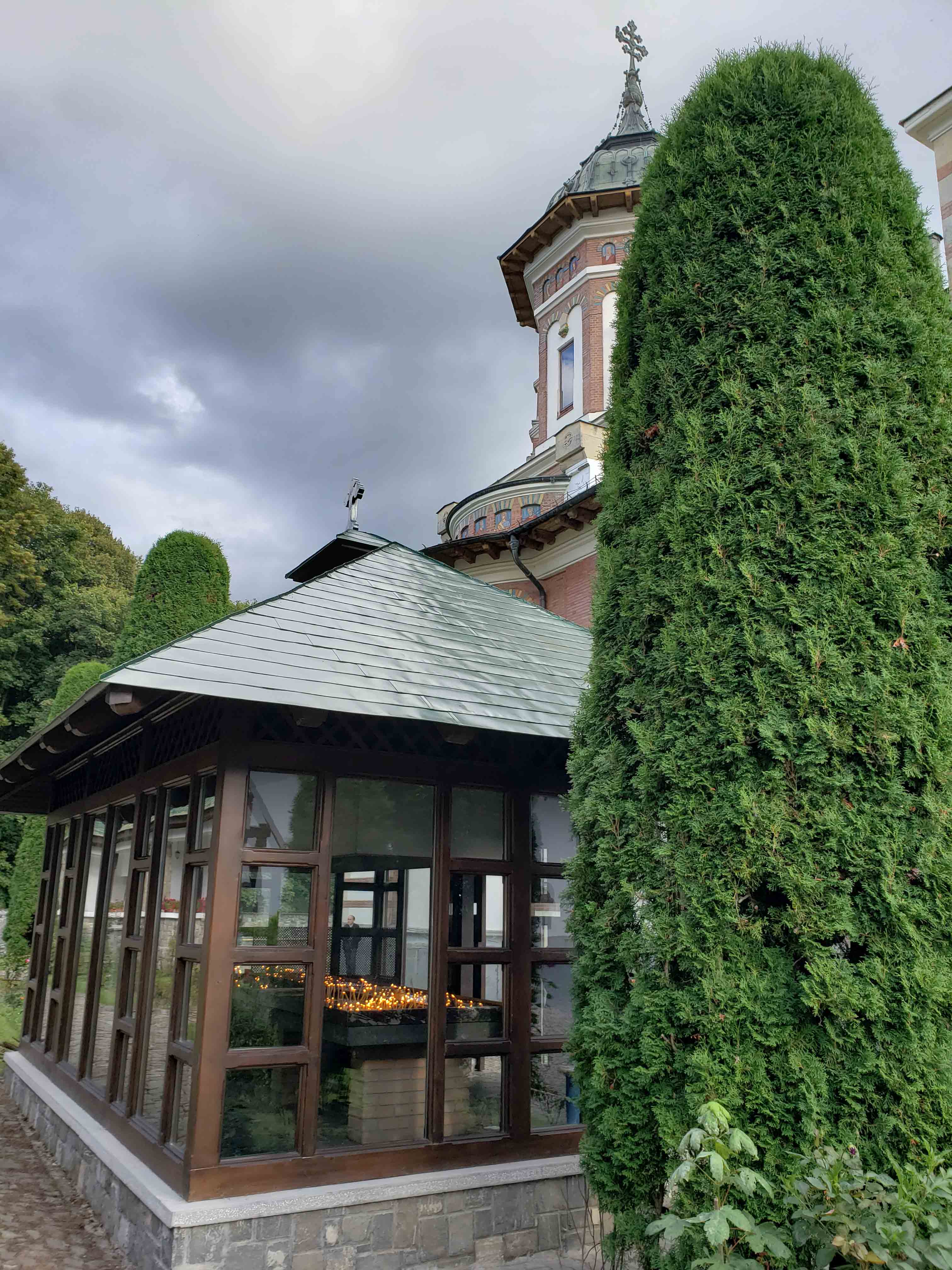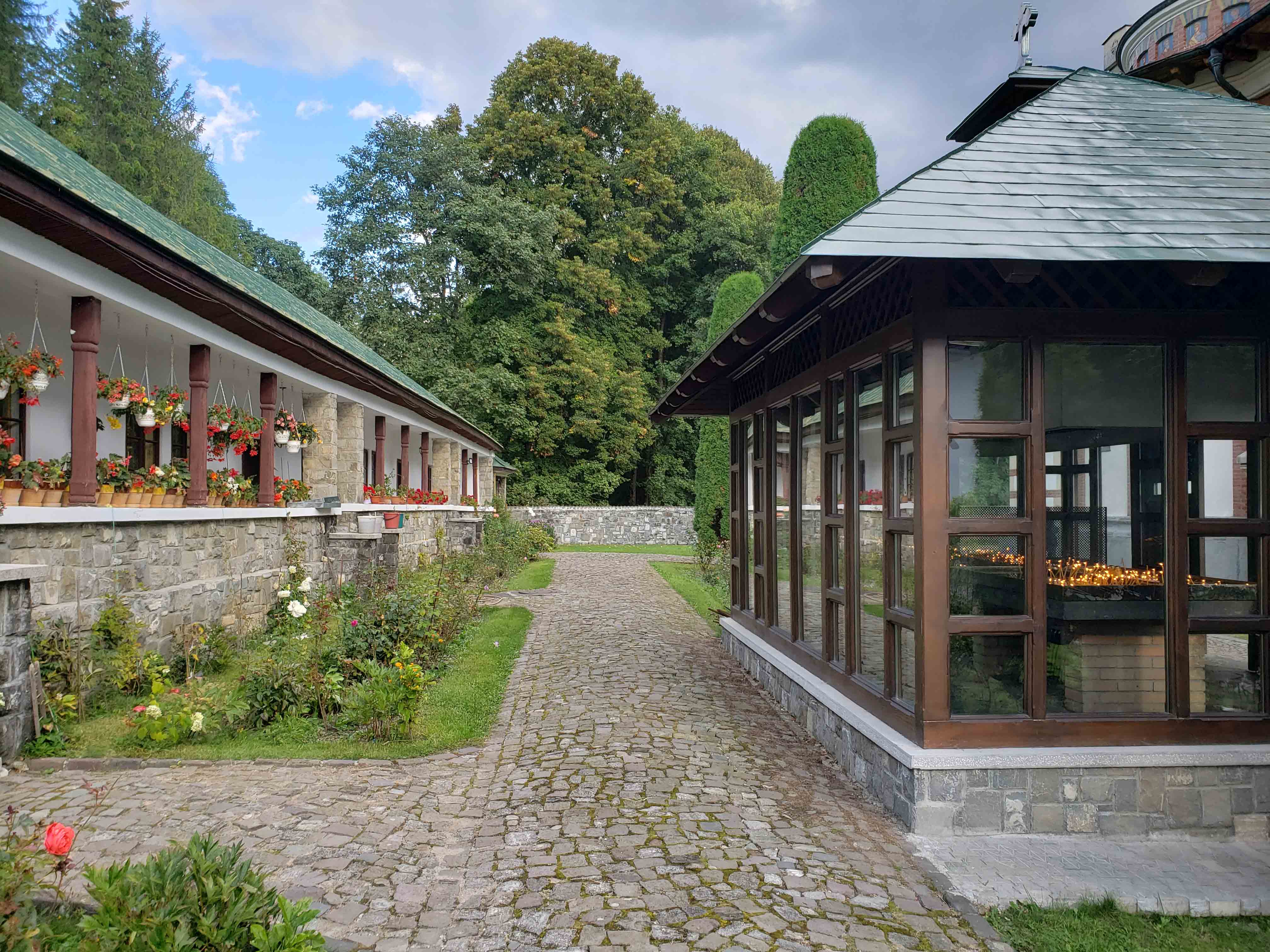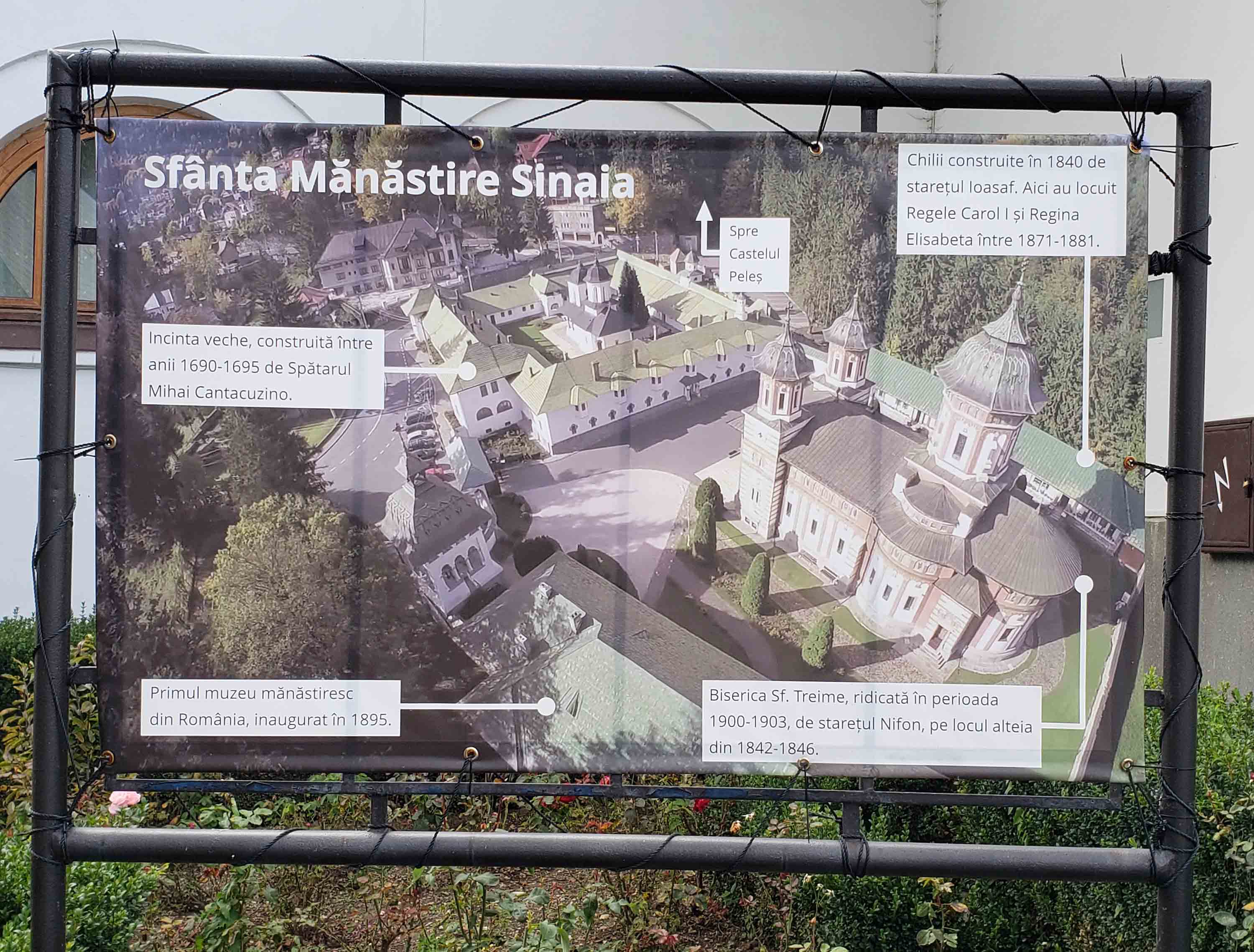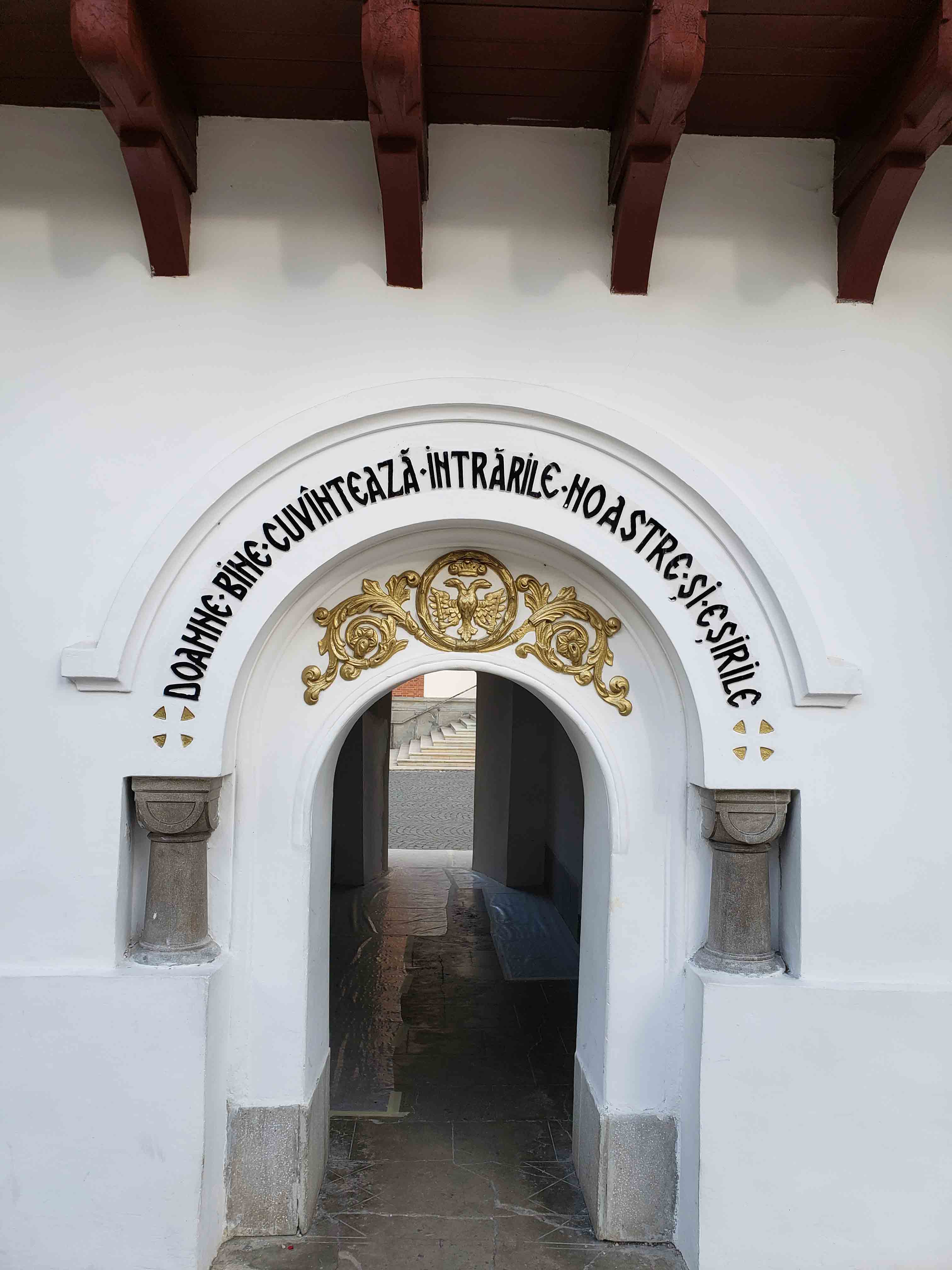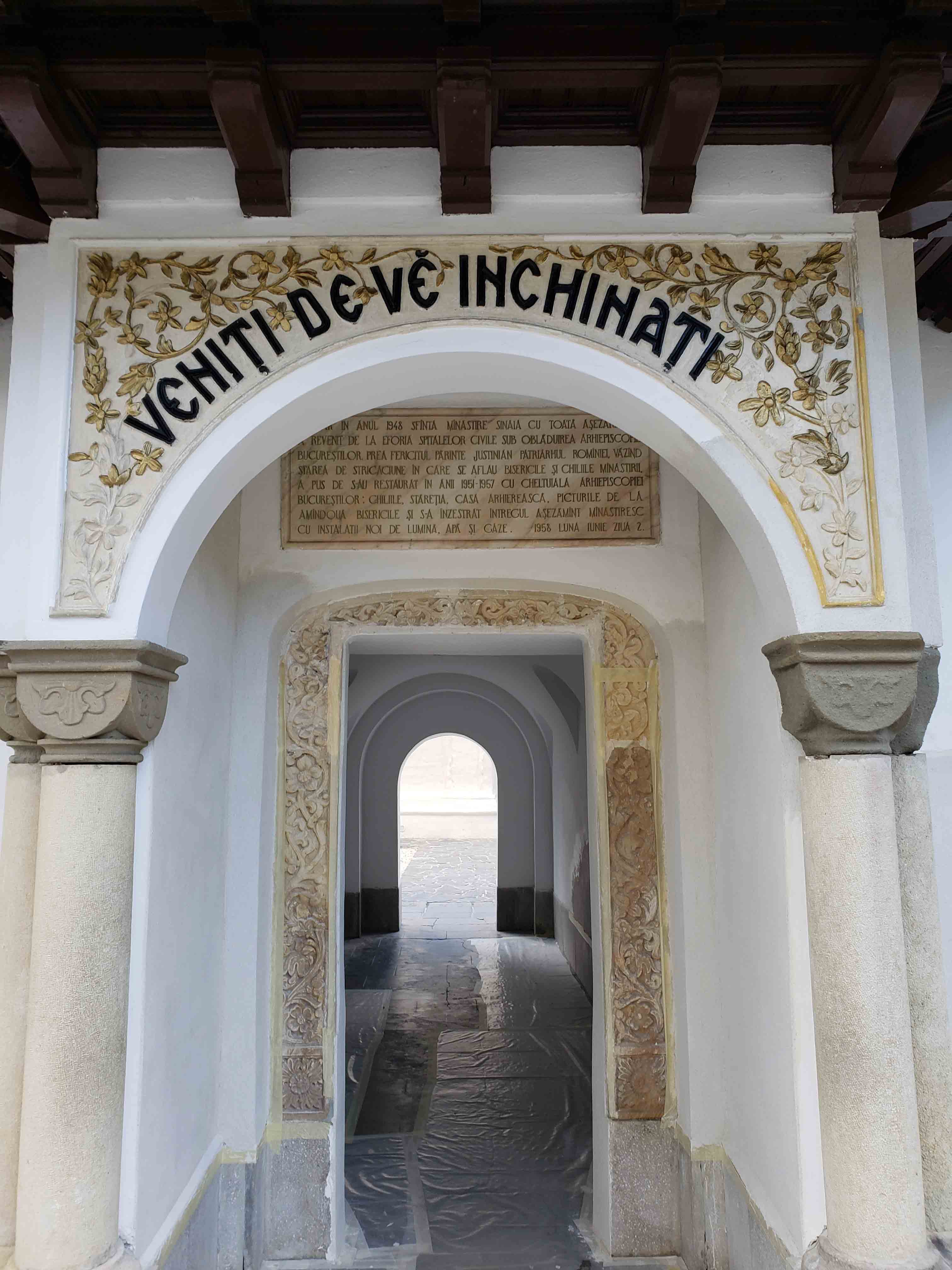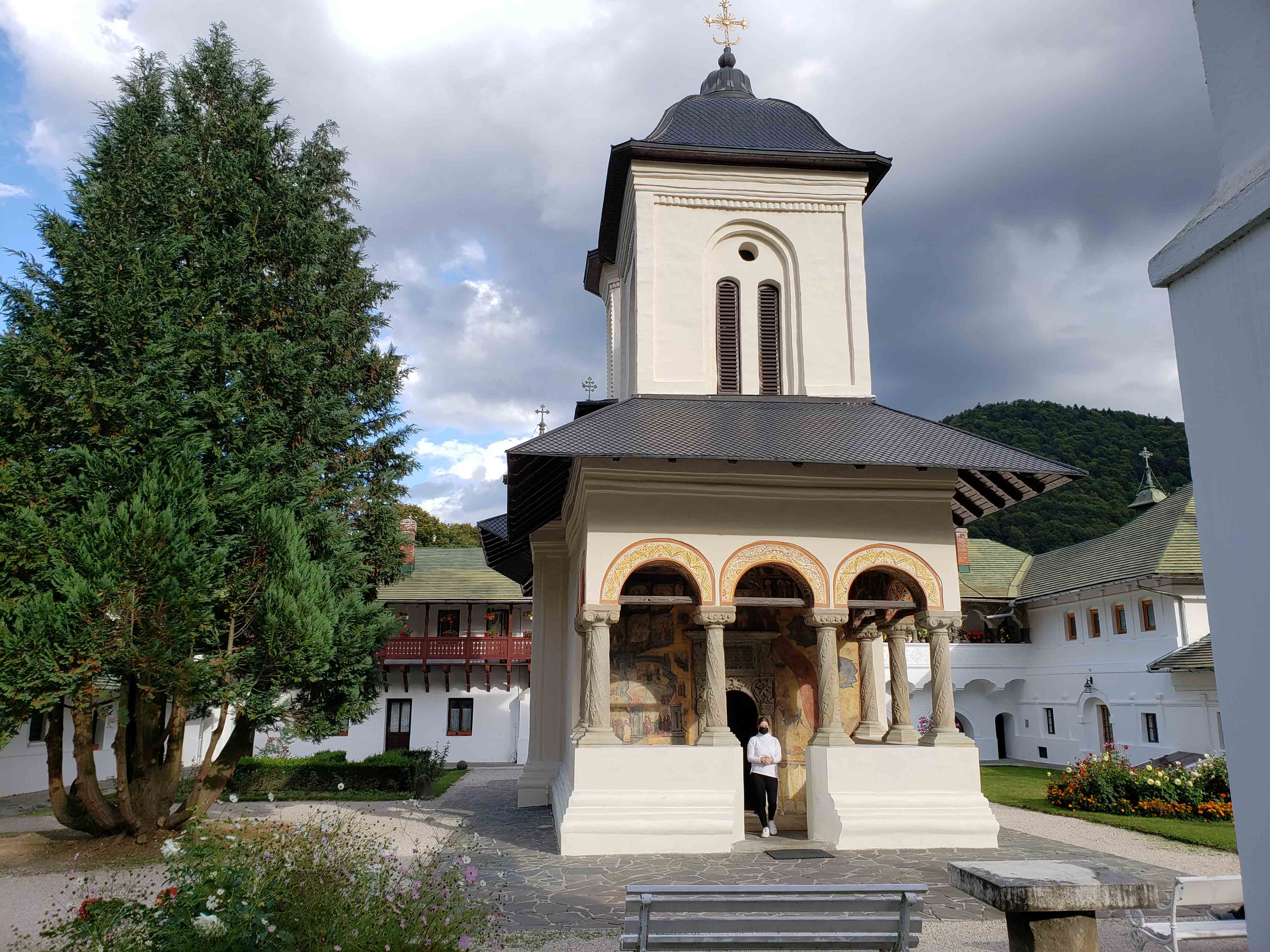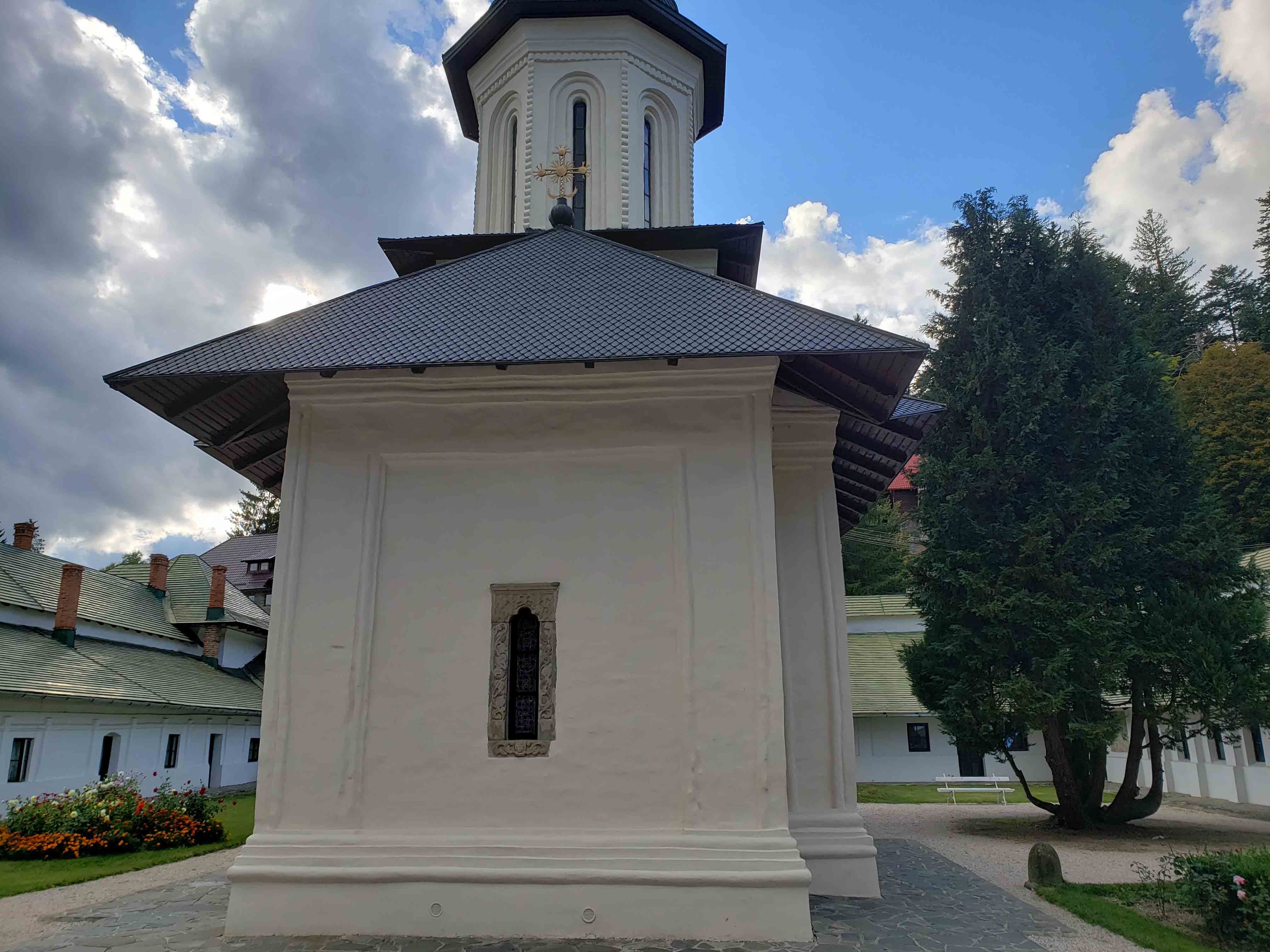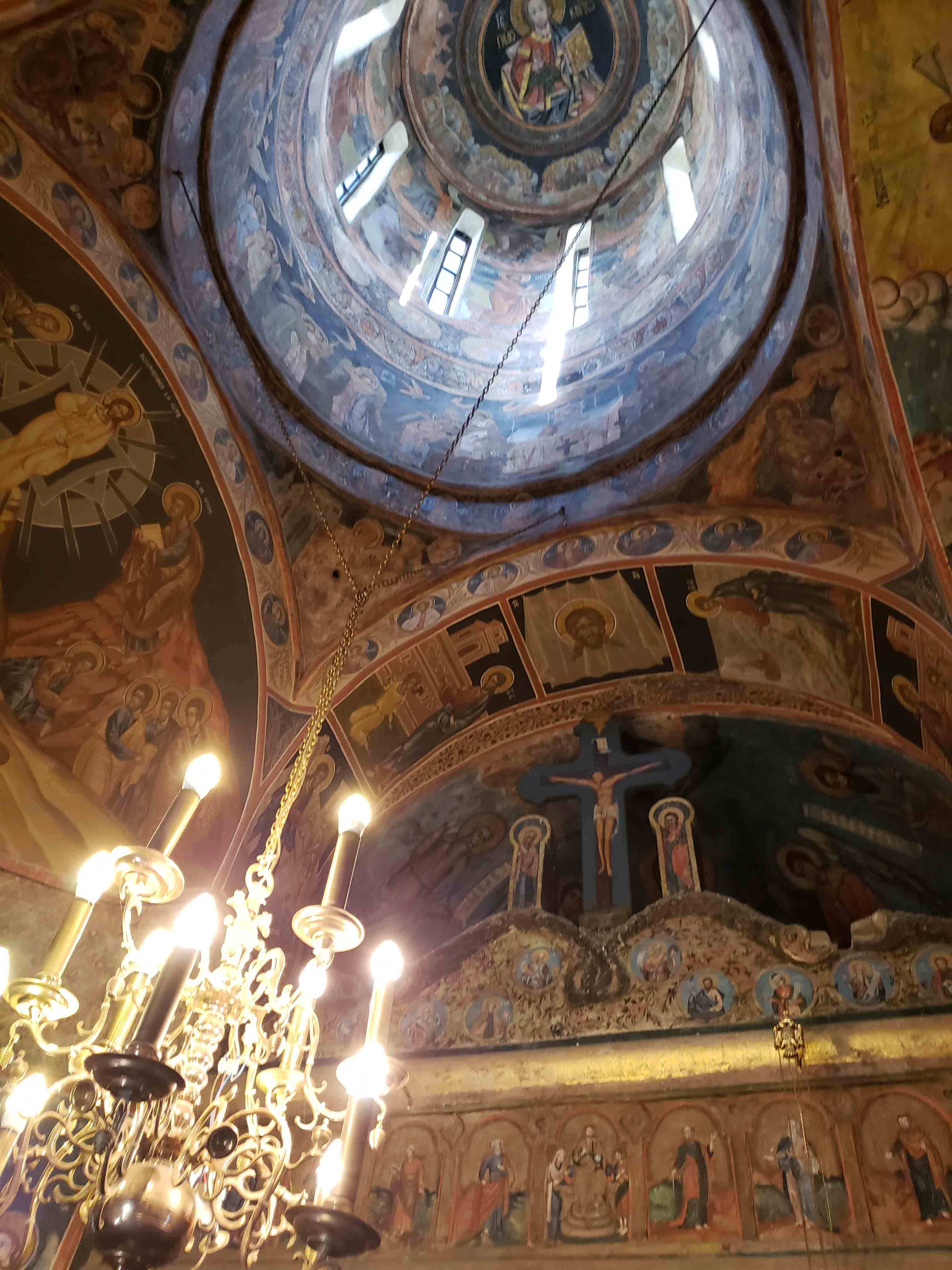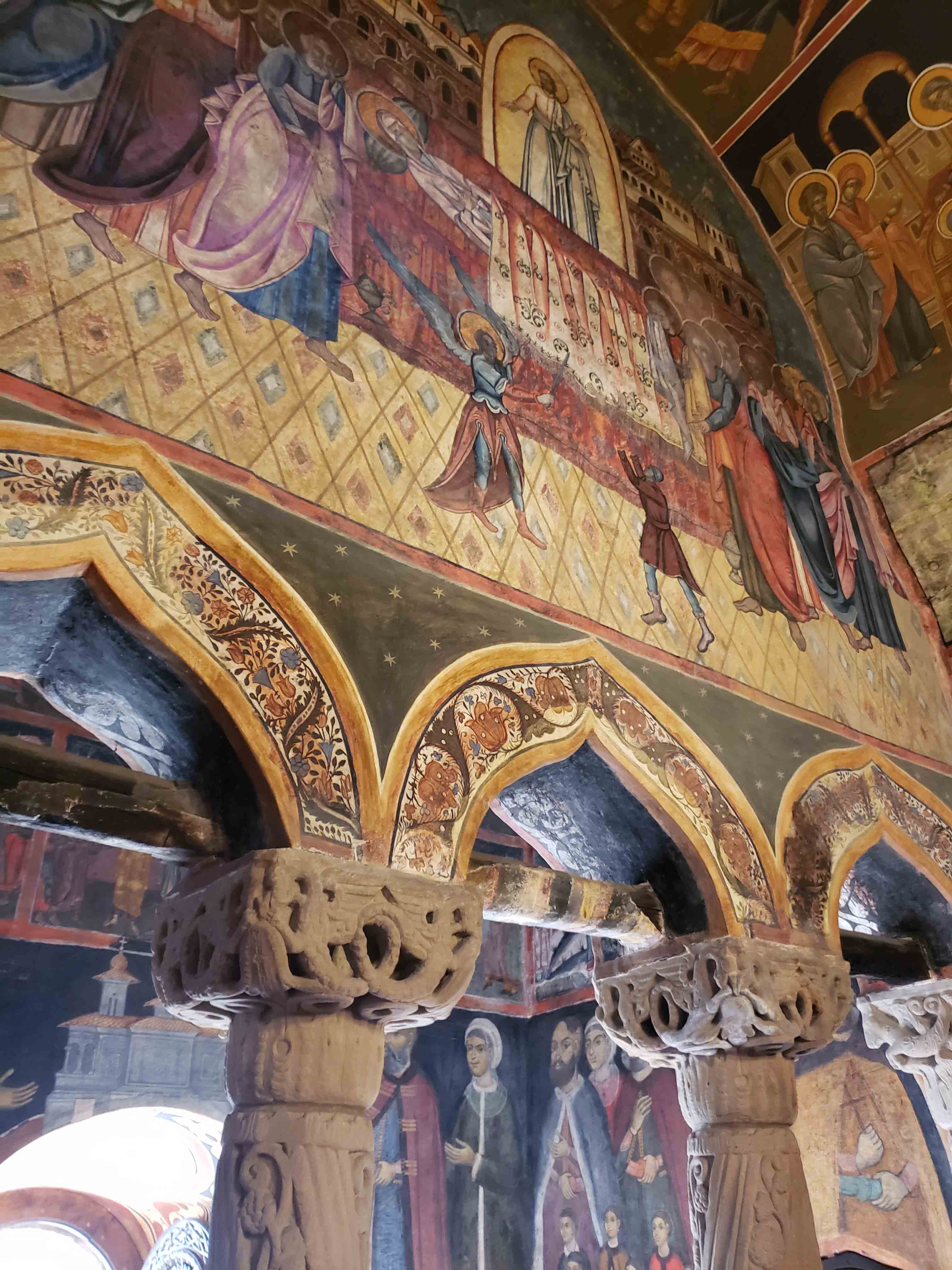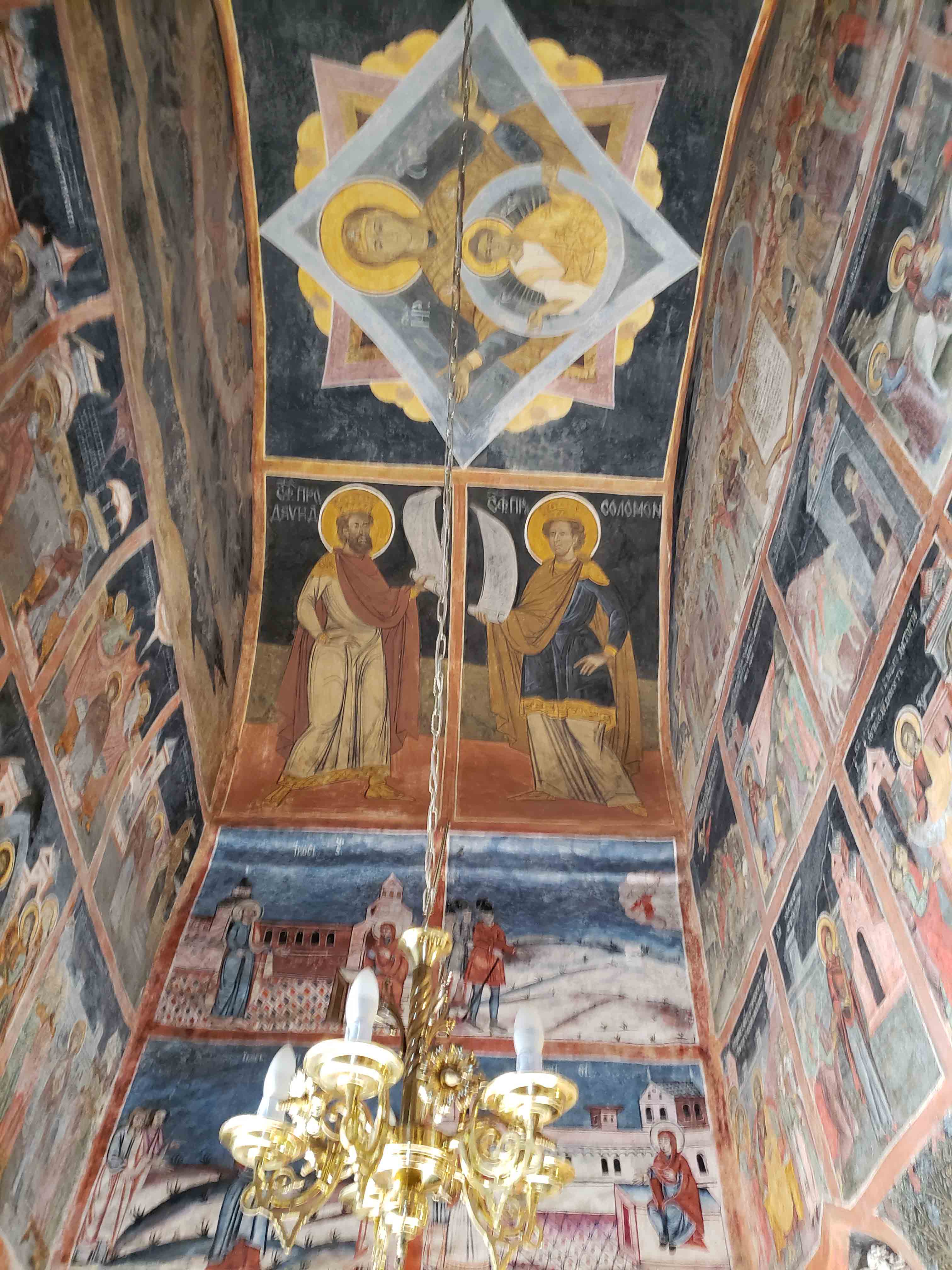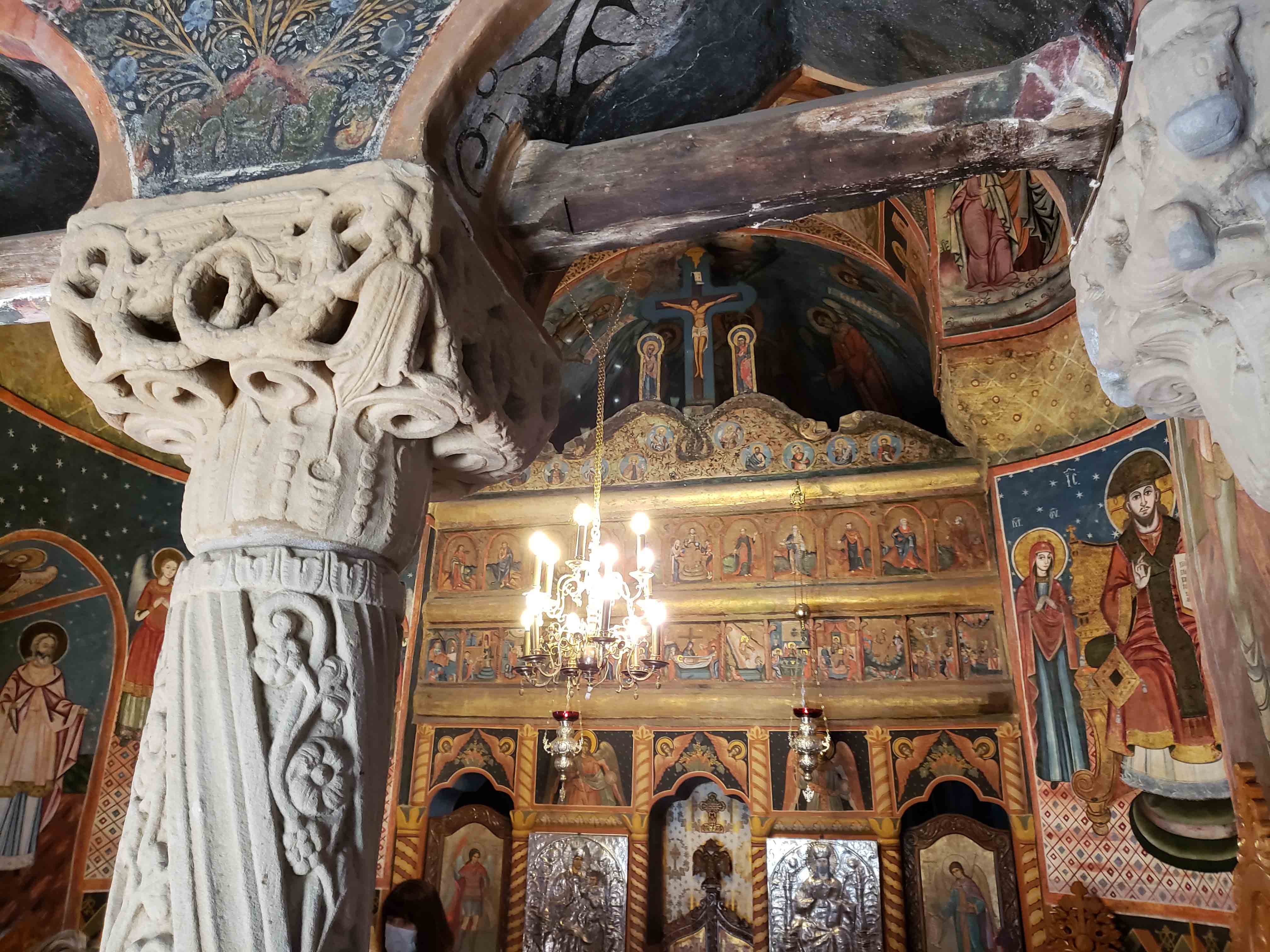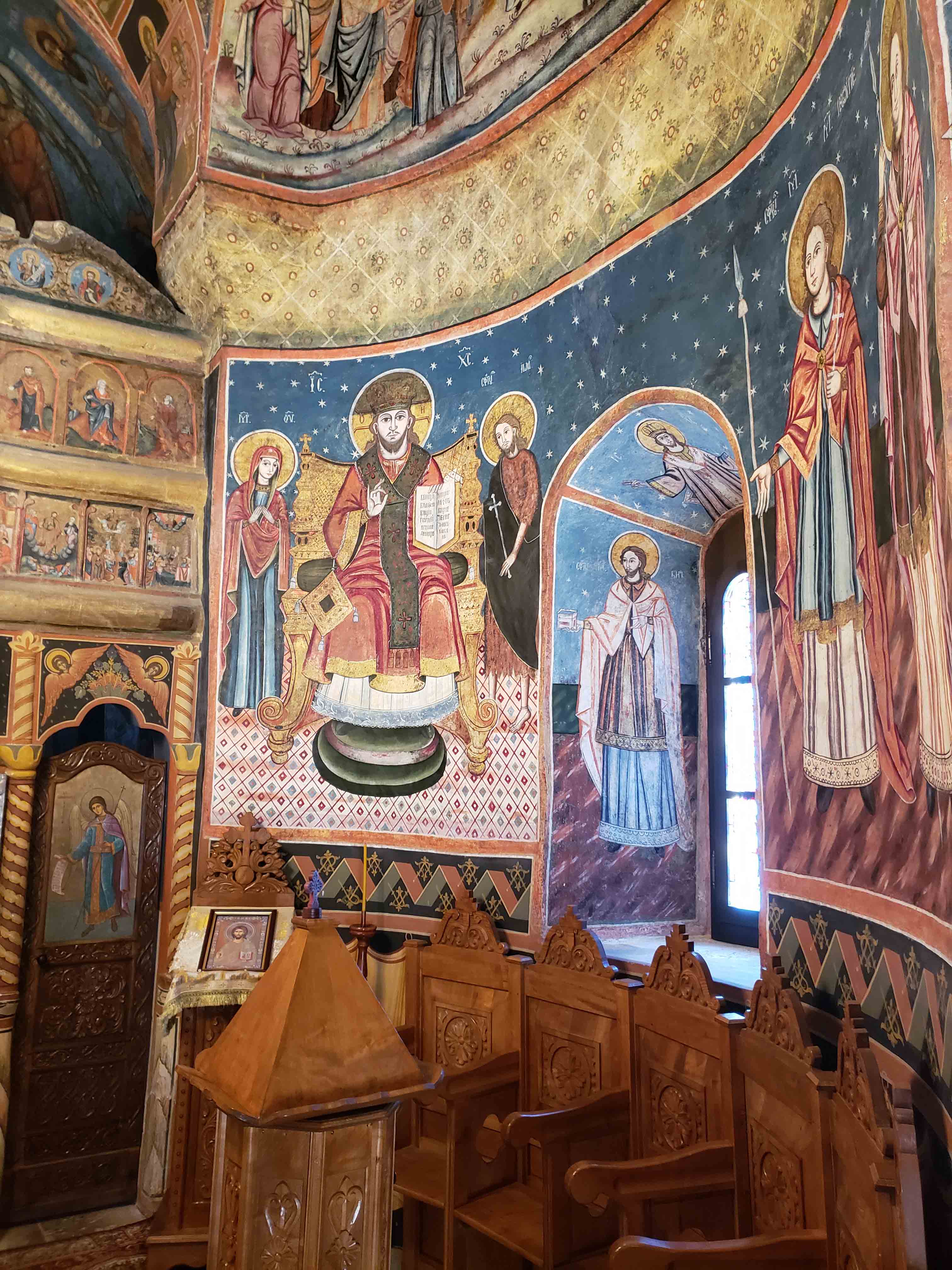Another small town quaintly tucked under the ever watchful eye of Mount Furnica of the Bucegi Range is Sinaia. Out of sight of N60 and tucked away under this hill is a real star town, replete with many large hotels and even a casino for anyone wishing to try their luck in a Romanian tourist location.
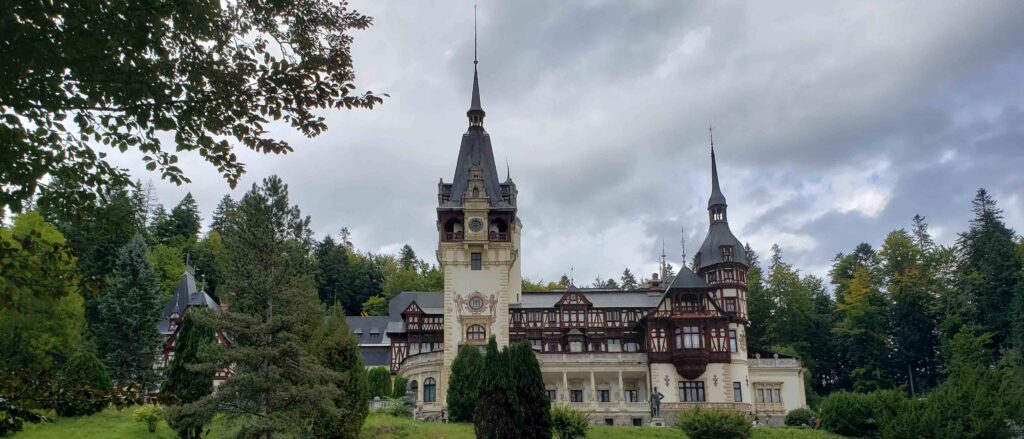
On the 19th of September we ventured down to this town which sits just below Buşteni, in order to enjoy lunch, the town and to visit Castle Peleş.
Sinaia – The Town
This town is much like Buşteni, aside from the fact that it appears to have more money and is well maintained; no doubt due to the large hotels and the casino that are part of it. It lies on the same strip of N60 which runs north to south its neighbor to the north.
The Prahova River runs alongside the town, as well as a line of the Romanian Railroad; but unlike Buşteni, the railroad does not interfere with this town at all. Traffic however can still be problematic at times, just because of the nature of N60 being the only straight road in these parts, especially during rush hour times. The good news though is, once off of N60, traffic in and through the town seems well controlled by a series of traffic circles and other parallel streets. While we were there they were having an outside market, which apparently drew a lot of locals.
Castle Peles
The Castle Peleş is more or less renovated and is a government run venue hosting tours, both self-pacing and private. It is rather large and consists of many separate rooms that are rather elaborate, including an arms room, study, reception, large dining hall, library and a grand hall that has a most unique wooden spiral staircase with an electrically operated roof that opens fully (though no proof or demonstrations were offered nor provided).

The castle was built sometime between 1873 and 1914, based on the architects Wilhelm Doderer and Johannes Schultz, both of which were German. The structure was later modernized by the Czech architect Karel Liman. And though some on the internet would suggest or assert it has anything to do with Count Dracula (Vlad the Impaler), it does NOT. That sole claim belongs to Bran Castle to the west.
The first inauguration of the building occurred in 1883 and introduced central heating to Romania, as well as an electric system that operated the large glass roof enclosure. It also had a vacuum cleaner, air ducts for heating and an electric elevator.
The castle is the former summer residence of King Carole I and Queen Elisabeth. It was used as part of the Romanian National Dynasty and often used for important political and other European cultural decisions at the turn of the century. It incorporates a synthesis of Neo-Renaissance (both German and Italian), Neo-Baroque, Rococo as well as French and Oriental styles.
The Monastery
On the way down from Castle Peleş is the Sinaia Monastery. It consists of three parts, the monastery proper (a set of buildings that surround the old chapel), the old chapel or church and the great church.
The original monastery was built in the late 1600s by Mihail Cantacuzino. Construction was due in part by a promise he made to the monks of Saint Anne and Nicholas, which lived at the time in nearby hermitages. He subsequently gave it the name, The Dormition of the Holy Virgin Mary, in memory of a pilgrimage he had taken at one time to the Holy Land.
It is quite unique in Romania since it forms a Latin cross, unlike the more traditional Orthodox styles, giving it the origins of the later Walachian and Brancoveanu styles. The churches profiles are very different from other forms in Romania since they replaced the traditional cornices with red brick dents; the facade frames are rectangular and painted with frescos, as well as the absence of the traditional belt.
The old chapel was burned in 1791 during the Russian-Austrian-Turkish war and restored somewhat in 1795 by the same painters who had decorated the chapel. The paintings on the porch are all original and present scenes from the life of Saint Catherine (the protector of the monastery), Saint George (protector of soldiers and Moldavia) and Saint Demetrios (protector of Walachia). Important scenes from both Heaven and Hell frame the entrance to the church.
The entrance represents Moses and his brother Aaron and are built in carved stone. The nave of the church depicts the Ascension and Transfiguration, related to the secret nature of praying rightly to the divine or also known as hesychasm.
